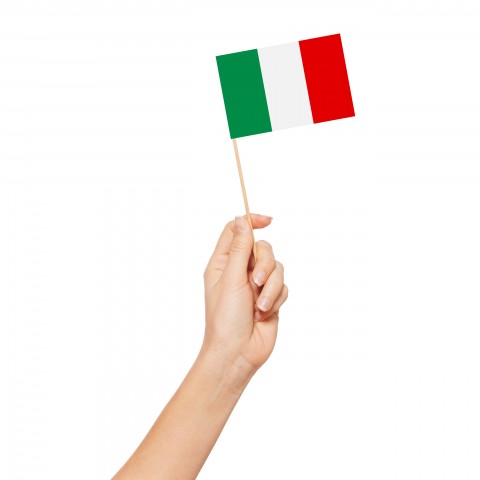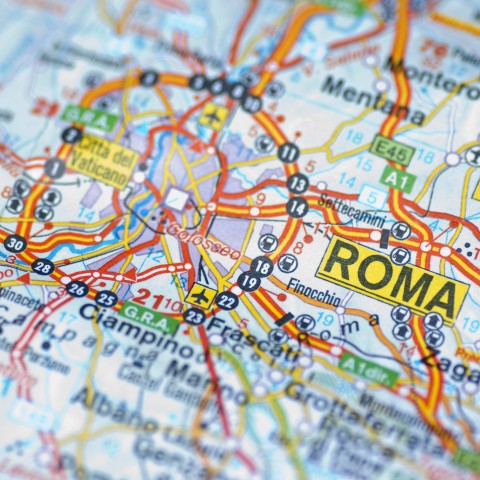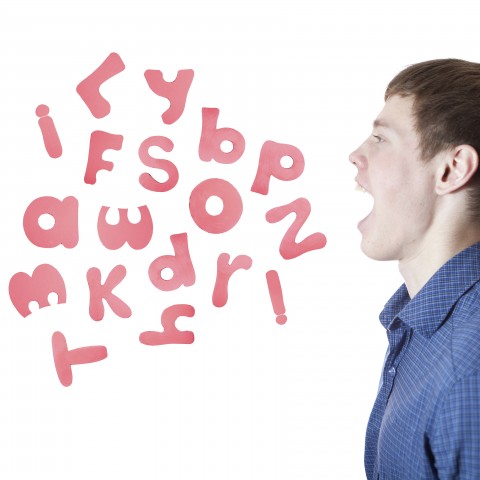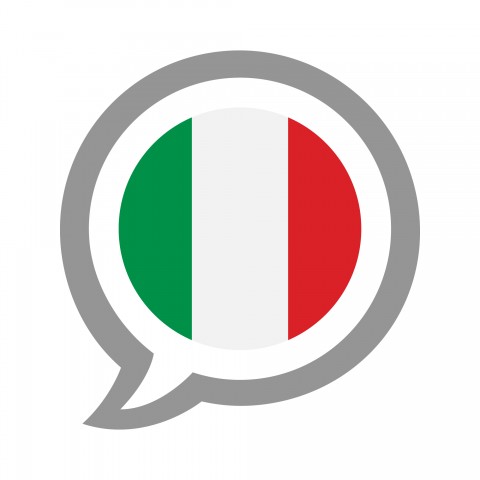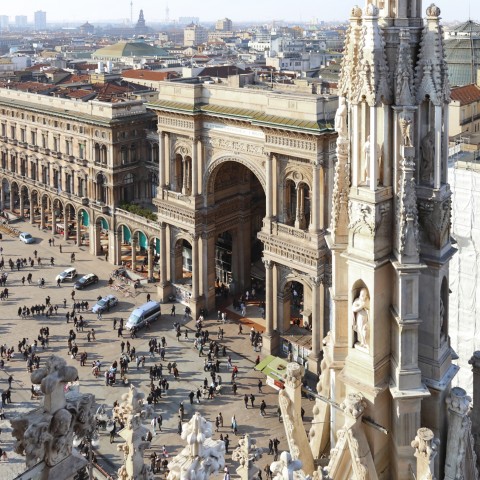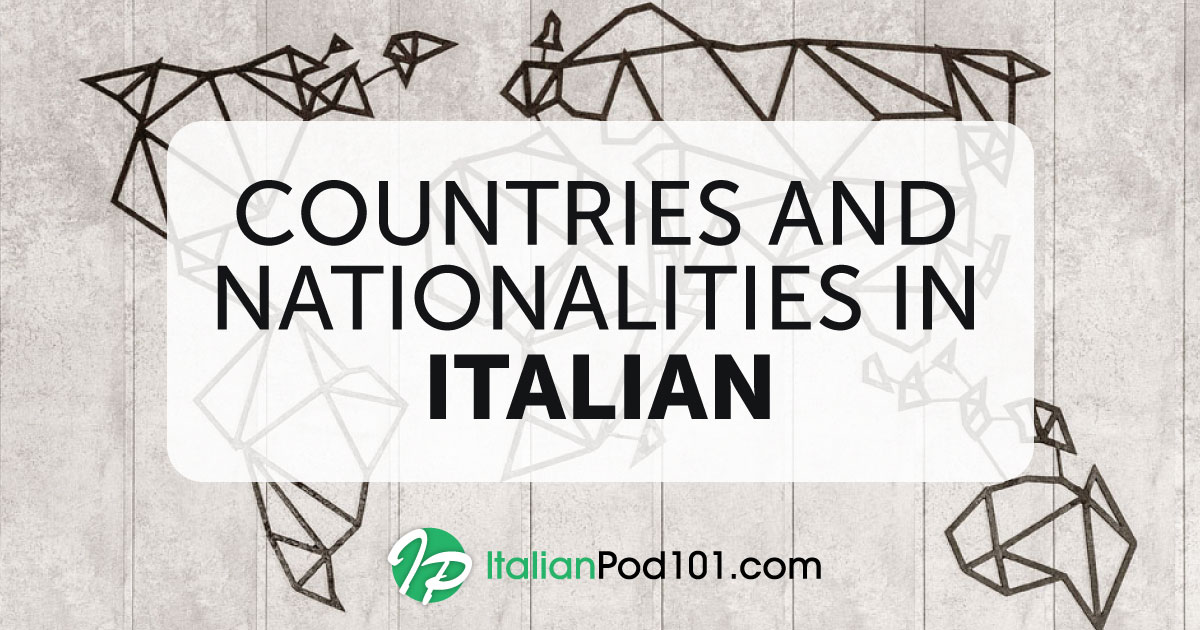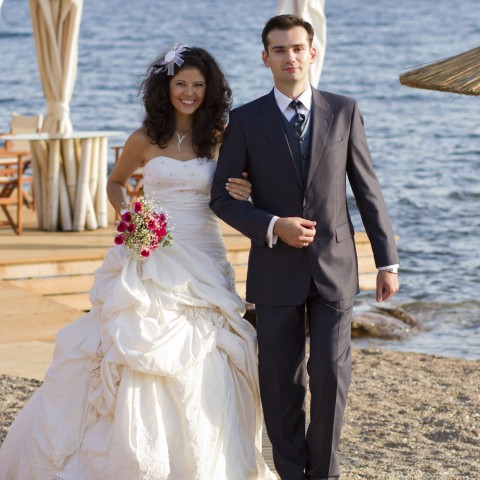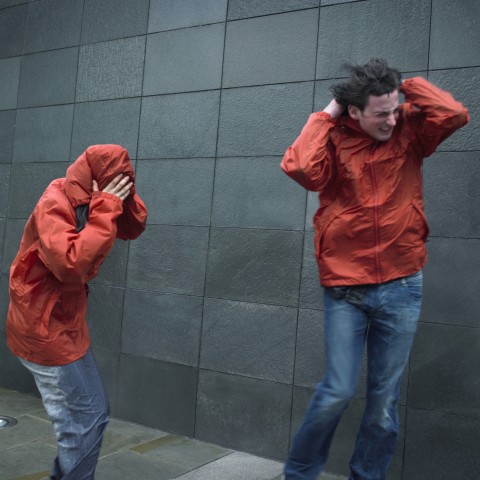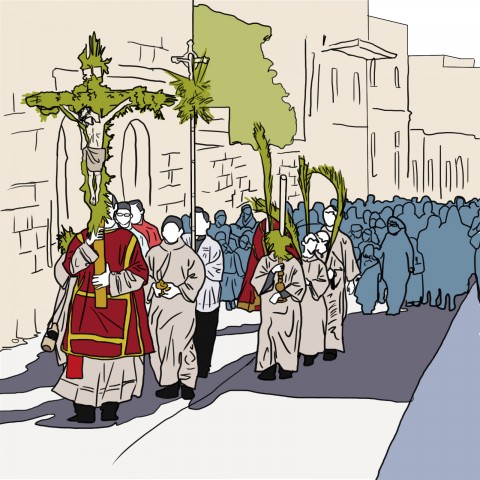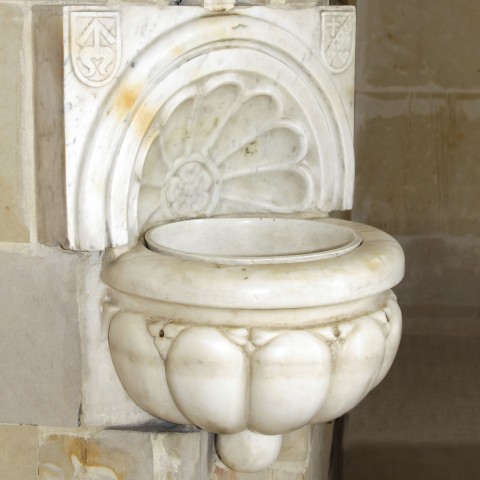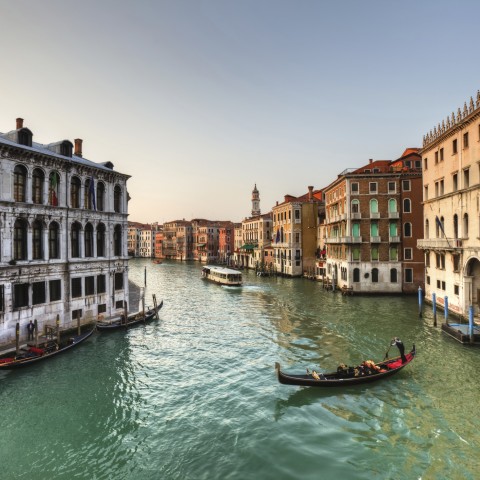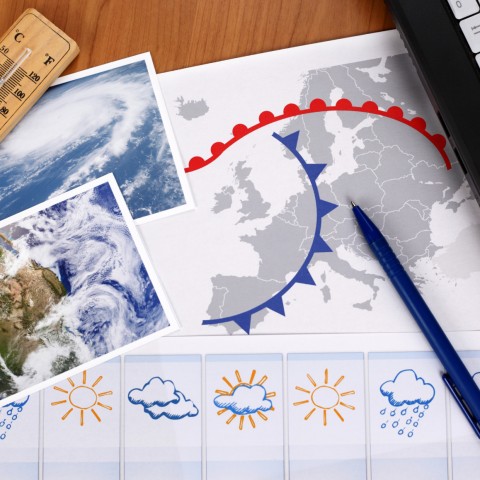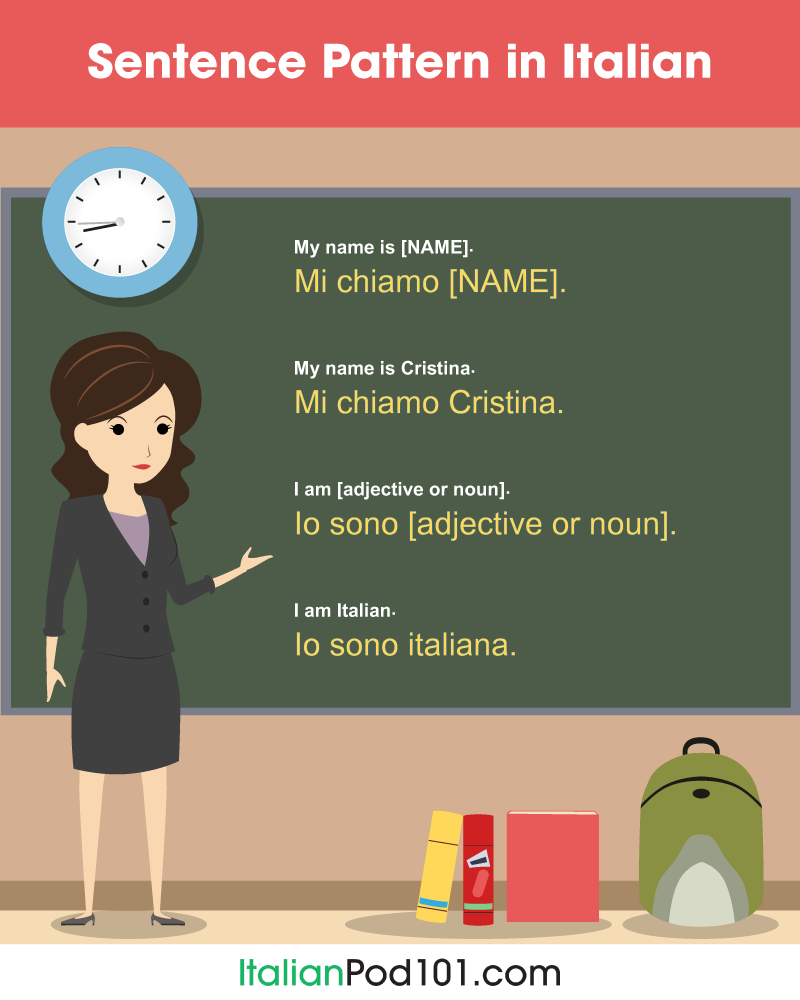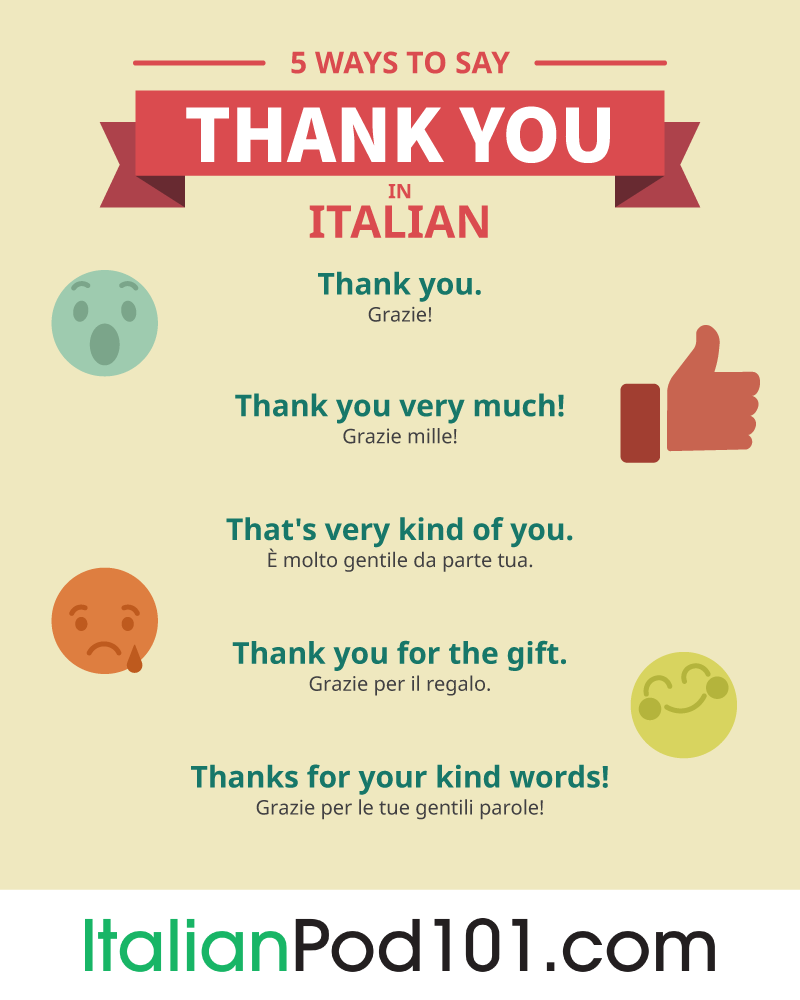Italian prepositions are like almost everything else in the Italian language: hard to understand at the beginning, but poetic and lovely to the ear. Well, with this comprehensive guide to prepositions in Italian by ItalianPod101, you’ll learn Italian prepositions in the blink of an eye.
We’ll cover the basics of Italian prepositions and when to use them, using charts and examples so that understanding Italian prepositions has never been clearer. It’s Italian prepositions made easy!

Table of Contents
- What is a Preposition?
- How to Use Italian Prepositions
- Main Italian Prepositions
- Main Prepositions + Article
- Learn Italian with Ease at ItalianPod101
1. What is a Preposition?
But first, we must start with the basics: the very definition of a preposition.
A preposition is a small word that connects two words or sentences that have a specific relationship to each other.
For example: The cat is in the box. The preposition here doesn’t connect them in a one+one relation—that’s a conjunction (e.g. Angela and Luke are going to meet some friends).
Instead, a preposition adds some information regarding the relationship between the two elements it connects. For example, it tells you that the cat is in the box, not on the box or beside it.
2. How to Use Italian Prepositions
In Italian, there are basically two different kinds of prepositions:
- Main prepositions (preposizioni proprie in Italian)
- Main prepositions + article
Then there are words that can be used as prepositions but also have other uses (preposizioni improprie in Italian), and prepositions made of more than one word. In this article, we’ll talk about the main prepositions (preposizioni proprie) and their combinations with articles.
Yes, we know, grammar is complicated. But we’ll show you how to use prepositions in Italian with the help of some examples, and everything will become much simpler.
3. Main Italian Prepositions
The main prepositions in Italian are: di, a, da, in, con, su, per, tra, fra. Let’s see each one of them in detail.
1- Di
As far as simple prepositions in Italian go, di is by far the most important and versatile preposition of all. It may have a lot of different functions within a sentence. The most important are:
- Specification
- Aspettiamo l’arrivo di Marta.
“We are waiting for Marta’s arrival.”
- Aspettiamo l’arrivo di Marta.
- Naming
- Stiamo entrando nella città di Roma.
“We are now entering the city of Rome.”
- Stiamo entrando nella città di Roma.
- Fault
- Il colpevole di questo crimine è stato trovato.
“The person who’s guilty of this crime has been found.”
- Il colpevole di questo crimine è stato trovato.
- Penalty
- Ho dovuto pagare una multa di 80 euro.
“I had to pay an eighty-euro fine.”
- Ho dovuto pagare una multa di 80 euro.
- Origin
- Sono di Bologna.
“I’m from Bologna.”
- Sono di Bologna.
- Subject
- Vorrei parlarti di Marco.
“I’d like to talk to you about Marco.”
- Vorrei parlarti di Marco.
- Agent
- I tuoi pantaloni sono macchiati di sugo all’arrabbiata.
“Your trousers are stained with arrabbiata sauce.”
- I tuoi pantaloni sono macchiati di sugo all’arrabbiata.
- Material
- Adoro le case di legno.
“I love wood houses.”
- Adoro le case di legno.
- Abundance
- Lucia è sempre così piena di energia.
“Lucia is always so full of energy.”
- Lucia è sempre così piena di energia.
- Limitation
- Il Marocco è un paese povero di acqua.
“Morocco is a country that’s poor in water.”
- Il Marocco è un paese povero di acqua.
- Cause
- Sto tremando di rabbia.
“I’m shaking with rage.”
- Sto tremando di rabbia.
- Partition
- Questa è la piazza più bella di tutte quelle che abbiamo visto.
“Of all the squares we’ve seen, this is the most beautiful.”
- Questa è la piazza più bella di tutte quelle che abbiamo visto.
- Comparison
- Firenze è più piccola di Milano.
“Florence is smaller than Milan.”
- Firenze è più piccola di Milano.
- Quality
- Cerchiamo persone di talento.
“We are looking for talented people.”
- Cerchiamo persone di talento.
- Weight or measure
- Ho comprato un melone di 3 chili.
“I’ve bought a three-kilo melon.”
- Ho comprato un melone di 3 chili.
- Specific time (when)
- La libreria è chiusa di lunedì mattina.
“The bookstore is closed on Monday mornings.”
- La libreria è chiusa di lunedì mattina.
- Continued time
- Ho fatto un viaggio di un mese negli Stati Uniti.
“I took a one-month trip to the United States.”
- Ho fatto un viaggio di un mese negli Stati Uniti.
It can also connect a sentence with a clause. For example:
- Teresa mi ha chiesto di tornare da lei.
“Teresa has asked me to come back to her.” - Ti ringrazio di essere così gentile con me.
“Thank you for being so kind to me.” - Ti ordino di smettere.
“I order you to stop.”
2- A
Another one of the simple Italian prepositions is a, which becomes ad when used before a word that starts with a vowel. It may be used in a sentence for many purposes:
- Indirect object
- Questa canzone è dedicata a mia moglie.
“This song is dedicated to my wife.”
- Questa canzone è dedicata a mia moglie.
- Being in a place
- Stasera voglio stare a casa.
“Tonight I want to stay at home.”
- Stasera voglio stare a casa.
- Specific time (when)
- Comincerò l’università a settembre.
“I’ll start university in September.”
- Comincerò l’università a settembre.
It can also connect a sentence with a clause when the clause is related to a cause or goal:
- Mi sbagliavo a fidarmi di lui.
“I was wrong to trust him.” - Sono venuto a congratularmi con te.
“I’ve come here to congratulate with you.”
3- Da
Da is another Italian preposition with a lot of different functions. In a sentence, the most important are:
- Going from a place
- Sono partito da Roma questa mattina.
“I left Rome this morning.”
- Sono partito da Roma questa mattina.
- Going to someone
- Per favore, torna da me.
“Please, come back to me.”
- Per favore, torna da me.
- Being at someone’s place
- Stasera vado a dormire da Michela.
“Tonight I’m going to sleep at Michela’s place.”
- Stasera vado a dormire da Michela.
- Agent and cause
- Marco è stato aiutato dai suoi amici.
“Marco has been helped by his friends.”
- Marco è stato aiutato dai suoi amici.
- Separation
- Luca è molto diverso da suo fratello.
“Luca is very different from his brother.”
- Luca è molto diverso da suo fratello.
- Specific time (from when)
- Il corso ricomincerà da lunedì.
“The course will start again on Monday.”
- Il corso ricomincerà da lunedì.
- Continued time (for how long)
- Danila è a casa da due ore.
“Danila has been home for two hours.”
- Danila è a casa da due ore.
- Price
- Il mio capo ha un’auto da 80.000 euro.
“My boss owns a 80.000-euro car.”
- Il mio capo ha un’auto da 80.000 euro.
- Manner
- Si è comportato da stupido.
“He acted stupid.”
- Si è comportato da stupido.
- Purpose
- I tuoi occhiali da sole sono davvero belli.
“Your sunglasses are really nice.”
- I tuoi occhiali da sole sono davvero belli.
It can also connect a sentence to a clause related to a goal or consequence. For example:
- Ho riso tanto da piangere.
“I laughed so much that I cried.” - Mi resta solo un episodio da vedere.
“I just have one episode left to see.”
4- In
This preposition is mostly used for the following functions:
- Being in a place:
- L’ufficio è in via San Felice.
“The office is on San Felice Street.”
- L’ufficio è in via San Felice.
- Period of time:
- Ho speso tutto il mio stipendio in 5 giorni.
“I spent all my salary in five days.”
- Ho speso tutto il mio stipendio in 5 giorni.
5- Con
Con is basically the same as the English preposition “with”:
- Aspetta, vengo con te.
“Wait, I’ll go with you.” - Con questo caldo, bisogna bere molta acqua.
“With this heat, you have to drink a lot of water.”
6- Su
Su is used mainly for:
- Being on something
- Il gatto è salito su un albero.
“The cat has climbed on a tree.”
- Il gatto è salito su un albero.
- Manner
- Prepariamo torte su richiesta.
“We bake cakes upon request.”
- Prepariamo torte su richiesta.
- Subject
- Ho scritto un libro sulla mia esperienza.
“I’ve written a book about my experience.”
- Ho scritto un libro sulla mia esperienza.
- Fraction
- Quasi una donna italiana su due non lavora.
“Almost one in two Italian women doesn’t work.”
- Quasi una donna italiana su due non lavora.
7- Per
In most sentences, per can be translated to the English preposition “for.” For example:
- Oggi devo comprare un regalo per mia figlia.
“Today I have to buy a present for my daughter.” - Per un bel concerto, sono capace di fare centinaia di chilometri.
“I can travel hundreds of kilometers for a good concert.” - Il vestito sarà pronto per venerdì.
“The dress will be ready on Friday.” - Giulia parte per New York domani mattina.
“Giulia is leaving for New York tomorrow morning.”
But it’s also used for clauses related to a cause or goal:
- Sono partito un’ora fa per arrivare puntuale.
“I left an hour ago to arrive on time.” - Per fare carriera il mio collega farebbe qualsiasi cosa.
“To move up in his career, my colleague would do anything.”
8- Tra and fra
Tra and fra are identical in meaning and function. Their main uses in a sentence are:
- Going through a place
- Siamo passati tra le due case.
“We passed between the two houses.”
- Siamo passati tra le due case.
- Distance (in space and time)
- Arriveremo tra due ore.
“We’ll arrive in two hours.”
- Arriveremo tra due ore.
- Company
- Amo passare le vacanze fra amici.
“I love to spend the holidays among friends.”
- Amo passare le vacanze fra amici.
- Continued time
- Tra il 2015 e il 2018 ho abitato a Milano.
“From 2015 to 2018 I lived in Milan.”
- Tra il 2015 e il 2018 ho abitato a Milano.
4. Main Prepositions + Article
Italian prepositions and articles combine to form single words. But it’s important to note that Italian articles and prepositions combine only when the article is definite. That’s to say, only when it’s il, la, lo, l’, le, i, or gli, and when the preposition is di, a, da, in, and su (con and per only in ancient Italian). Everything will be clearer with this Italian prepositions + articles chart:
| Il | La | L’ | Lo | I | Gli | Le | |
|---|---|---|---|---|---|---|---|
| Di | Del | Della | Dell’ | Dello | Dei | Degli | Delle |
| A | Al | Alla | All’ | Allo | Ai | Agli | Alle |
| Da | Dal | Dalla | Dall’ | Dallo | Dai | Dagli | Dalle |
| In | Nel | Nella | Nell’ | Nello | Nei | Negli | Nelle |
| Su | Sul | Sulla | Sull’ | Sullo | Sui | Sugli | Sulle |
Here are some examples of Italian prepositions and articles:
- Hai portato la macchina dal meccanico?
“Have you brought the car to the mechanic?” - Ho lasciato l’agenda sulla scrivania, al lavoro.
“I’ve left my diary on the desk, at work.” - Attento, è pericoloso tuffarsi dagli scogli!
“Careful, it is dangerous to dive from the rocks!”
5. Learn Italian with Ease at ItalianPod101
Grammar can be harsh and complicated, but it’s easy to learn when you can follow the lessons whenever you want and study in an entertaining, interactive environment. That’s ItalianPod101.
Here on our site, you’ll find comprehensive guides like this one that’ll help you become a master of the Italian language, with tons of examples and tips. Download our apps or enjoy our video lessons from your PC, and whenever you have a doubt or just want to chat, you can find fellow students on our forum. Don’t be shy!
Before you go, let us know in the comments how you feel about Italian prepositions. More confident, or do you still need some Italian prepositions help? We look forward to hearing from you, and will help out the best we can!

Life Event Messages: Happy Birthday in Italian & More
Being part of your family’s, friends’, and colleagues’ life events is important in having a loving and caring relationship with them. That’s why we at ItalianPod101 have listed the most important messages for life events in Italy: In this article, you’ll learn how to say Happy Birthday in Italian, Italian Christmas greetings, messages you can use in case of funerals or marriages, and much more.
With our guide to life event messages in Italian culture, you’ll always know what to say.

Table of Contents
1. The Best Messages for Life Events in Italy
1- How Do You Say Happy Birthday in Italian?
Birthdays are very important for Italians, especially for the children (and their parents), and the elderly. To wish someone you know a happy birthday will make them happy, and make them feel like you care for them.
Some people—especially middle-aged men and women—are very private about their birthday, and prefer not to celebrate it. But you’ll never be considered impolite if, without knowing their attitude, you wish them happy birthday. They’ll simply tell you that they don’t like birthdays and you’ll just have to avoid mentioning it next year.
Here’s our answer to the question “How do you say happy birthday in Italian?”: It depends on the occasion. Some examples are:
- Buon compleanno – “Happy birthday.” Suitable for both formal and informal situations, and for both speaking and writing.
- Felice compleanno – “Happy birthday.” Suitable for both formal and informal situations, and for both speaking and writing. Less common than Buon compleanno.
- Tanti auguri di buon compleanno – “Many wishes of a happy birthday.” Suitable for both formal and informal situations, and for both speaking and writing.
2- What to Say in Case of Pregnancy & Birth
Baby showers aren’t common in Italy, but you should send your best wishes when someone’s pregnant or when a baby is born. Here’s a list of Italian greetings for life events full of joy, like pregnancy or birth.
In case of a pregnancy, here’s how you can offer congratulations in Italian:
- Congratulazioni per la bellissima notizia. – “Congratulations for the wonderful news.” Suitable for both formal and informal situations, and for both speaking and writing.
- Auguri per l’attesa più dolce che ci sia. – “My best wishes for the sweetest expectation.” Suitable for both formal and informal situations. Mostly used in writing.
In case of a newborn:
- Benvenuto/benvenuta… (name of the baby) – “Welcome…” Suitable for both formal and informal situations, and for both speaking and writing.
- I miei/nostri auguri di tanta felicità a… (name of the baby) – “My/our wishes of a happy life for…” Suitable for both formal and informal situations, and for both speaking and writing.
3- What to Say for a Graduation
A graduation is always something to celebrate, and Italy is no exception. As always, how to greet a new graduate depends on your relationship with that person:
- Congratulazioni, dottore/dottoressa. – “Congratulations, graduate.” Suitable for informal situations, and for both speaking and writing.
- Auguri per la tua laurea. – “My best wishes for your graduation.” Suitable for informal situations, and for both speaking and writing.
- Congratulazioni e tanti auguri per i futuri successi. – “Congratulations and my best wishes for your future success.” Suitable for both formal and informal situations, and for both speaking and writing.
Fun fact: In many Italian university cities, graduations are often celebrated in a pretty extreme way. The newly graduated are ordered to drink, dress in a fun way, and forced to walk around the city while their friends make fun of them, play jokes, and read rhymed verses talking about them in an often vulgar way.
4- What to Say in Case of a New Job or Promotion
A new job is a new opportunity, and it’s always something to celebrate, especially in times of crisis. Here are a few Italian phrases of congratulations for this occasion:
- Congratulazioni per il tuo nuovo lavoro. – “Congratulations on your new job.” Suitable for informal situations, and for both speaking and writing.
- Congratulazioni per la sua nuova posizione lavorativa. – “Congratulations on your new job position.” Suitable for formal situations, and for both speaking and writing.
- Congratulazioni per il nuovo lavoro, ti auguro che ti dia tante soddisfazioni. – “Congratulations on your new job, I wish that you receive great satisfaction from it.” Suitable for informal situations, and for both speaking and writing.
5- What to Say When Someone Retires
Retirement is an important—and often a most-desired—step in everyone’s life. Like everywhere in the world, not everyone is happy about it, but most people are.
Nice things to say in case of retirement are:
- Congratulazioni, ma sappi che al lavoro ci mancherai tanto! – “Congratulations, but remember that we’ll miss you so much at work.” Informal, for speaking and writing, when addressing a colleague who has just retired.
- Congratulazioni e ora goditi il tuo tempo libero! – “Congratulations, and enjoy your free time now!” Informal, for speaking and writing.
- Dopo una vita di successi, congratulazioni per il suo pensionamento. – “After a life of successes, congratulations on your retirement.” Formal, for speaking and writing.
6- Italian Congratulations: Weddings & Engagements
Even if more and more Italians choose to live together without marrying, marriage is still considered an important step. Celebrations vary and depend on the couple’s desires and wealth. Some just do a little toast with their closest friends and relatives, while others invite hundreds of people to a huge lunch or dinner party. Anyway, friends, relatives, and simple acquaintances should wish well to the couple.
Some things that you may say to the newlyweds are:
- Vi auguro una vita di felicità. – “I wish you a life of happiness.” Suitable for both formal and informal situations, and for both speaking and writing.
- Felicitazioni per il vostro matrimonio. – “Congratulations for your wedding.” Formal, for writing.
- Auguri e felicità ai novelli sposi. – “My best wishes and happiness to the newlyweds.” Suitable for both formal and informal situations, mainly for writing.
7- Messages in Case of a Death/Funeral
When a loved person dies, it’s important to be there for their family and make them feel that you’re close. Most Italians do a Christian funeral a few days after the departure of their loved one. The day or night before the funeral, relatives, friends, neighbors, and acquaintances usually come to visit (at home or at the funeral home), and gather around him/her to pray.
Some Italian phrases for condolences include:
- Condoglianze a te e alla tua famiglia. – “Condolences to you and your family.” Informal, for speaking and writing.
- Le mie più sentite condoglianze a lei e alla sua famiglia. – “My most heartfelt condolences to you and your family.” Formal, for speaking and writing.
- Vicini nel dolore, porgiamo sentite condoglianze. – “We are close to you in your pain and we give you our heartfelt condolences.” Formal, for writing.
8- What to Say in Case of Bad News
It can be tricky to know how to react properly when someone from another culture tells you they just had bad news. Some good examples are:
- Mi dispiace tanto. – “I’m so sorry.” Informal, for speaking and writing.
- Ti sono vicino/vicina. Se hai bisogno conta su di me. – “I’m close to you. If you need anything, count on me.” Informal, for speaking and writing.
- Mi dispiace della brutta notizia, se ha bisogno di aiuto la prego di farmelo sapere – “I’m sorry for the bad news, if you need any help please let me know.” Formal, for speaking and writing.
9- What to Say When Someone’s Injured or Sick
When someone’s injured or sick, it’s common courtesy to wish them to get well soon. Here’s how:
- Riposati e torna in forma al più presto. – “Rest and get well soon.” Informal, for speaking and writing.
- Le auguro una pronta guarigione. – “I wish you a quick healing.” Formal, for speaking and writing.
- Prenditi cura di te e torna presto. – “Take care of yourself and come back soon.” Informal, for speaking and writing.
10- Greetings for the Most Important Holidays in Italy
How do you say Merry Christmas in Italian? What are the most popular Italian Easter greetings?
Holiday greetings are one of the most important life event messages in Italian family culture. Life event messages in Italian are seen as a way to show your affection to others, especially within the family.
Christmas is the most important holiday in Italy, and when it approaches, you’re supposed to visit your family or at least call to give your best wishes.
Let’s see the best ways to wish a Merry Christmas in Italian, and other Italian holiday greetings:
- Buon Natale. – “Merry Christmas.” Formal and informal, for speaking and writing.
- Buon anno. – “Happy New Year.” Formal and informal, for speaking and writing.
- Buon natale e felice anno nuovo. – “Merry Christmas and a Happy New Year.” Formal and informal, for speaking and writing.
- Buona Pasqua. – “Happy Easter.” Formal and informal, for speaking and writing.
- Buone vacanze. – “Happy holidays.” Formal and informal, for speaking and writing.
2. Speak and Behave Like a Real Italian with ItalianPod101
So, reader, what did you think about this article? Do you feel more confident about giving life event messages in Italian now, or are there still life event messages you want to know about? Let us know in the comments!
ItalianPod101 can give you 360° knowledge of the Italian language and culture. Our lessons cover a vast range of topics regarding grammar and vocabulary, as well as culture, good manners, and other important things to improve your relationship with your Italian family, friends, and colleagues. And our apps make your learning easier than ever!
With your hard work and our fun, effective learning tools, you’ll be speaking Italian like a native before you know it!

Talking About Italian Weather: Rome, Italy & More
Bella giornata, vero? (Nice day, isn’t it?)
How many times have you heard somebody start a conversation this way? Talking about the weather is, in every language, the typical topic that friends, acquaintances, and even perfect strangers often choose as a conversation starter.
In Italian, it’s no different. Talking about the weather is the perfect way per rompere il ghiaccio (to break the ice). This is why it’s so important to have all the vocabulary tools for talking about the weather (in Rome, Italy, or elsewhere).
In this article, you’ll learn practical Italian weather vocabulary, how to describe weather in Italian, the various weather conditions in Italian provinces, and how to talk about weather in Itallian like a native! Let’s get started.

Table of Contents
- Italian Weather Words
- Talking about Temperature and Seasons
- The Most Common Sentence Pattern to Talk about the Weather in Italian
- The Most Common Ways of Discussing the Weather in Italian
- Popular Sayings about the Weather
- How ItalianPod101 Can Help You Master Italian Conversation
1. Italian Weather Words
First of all, to talk about weather, Italian vocabulary words that relate to the local climate conditions are essential. Italy has a moderate clima mediterraneo (Mediterranean climate), so you shouldn’t expect any extreme weather conditions. But given its peculiar geography, the weather in Italy can be quite varied, depending on where you are. Still, no need to know words such as tifoni, uragani, or tornado (typhoons, hurricanes, or tornadoes).
Here’s basic weather vocab Italians use often to talk about the weather conditions you’re likely to encounter when traveling in Italy. One thing that you should definitely pay attention to is the specific gender of the word (most are feminine, by the way).
| Il sole (m) | “the sun” | Il sole in agosto è troppo forte. | “The sun is too strong in August.” |
| il cielo (m) | “the sky” | Il cielo è sereno. | “The sky is clear.” |
| le nuvole (f) | “the clouds” | Vedo molte nuvole all’orizzonte. | “I see many clouds on the horizon.” |
| la pioggia (f) | “the rain” | La pioggia ha ripulito l’aria. | “The rain cleaned the air.” |
| il temporale (m) | “the storm” | È il tipico temporale estivo. | “It’s the typical summer storm.” |
| la neve (f) | “the snow” | Quest’anno c’è poca neve. | “This year there is little snow.” |
| la nevicata (f) | “the snowstorm” | È la nevicata del secolo. | “It is the snowfall of the century.” |
| il vento (m) | “the wind” | Il vento soffia forte. | “The wind is blowing hard.” |
| la nebbia (f) | “the fog” | Con questa nebbia non si vede niente! | “You can see nothing with this fog!” |
| la foschia (f) | “the mist” | La foschia arriva dal mare. | “The mist comes in from the sea.” |
| la grandine (f) | “the hail” | La grandine ha danneggiato i vigneti. | “Hail damaged the vineyards.” |
| la grandinata (f) | “the hailstorm” | Nessuno aveva previsto questa grandinata. | “No one had foreseen this hailstorm.” |
| i tuoni (m) | “the thunder” | I tuoni mi fanno paura. | “Thunder scares me.” |
| i fulmini (m) | “lightning” | I fulmini illuminavano la notte. | “The lightning lit up the night.” |
This list provides you with the basic weather Italian words you’ll need. Do you want more? Have some fun with an ItalianPod101 video about weather words.
2. Talking about Temperature and Seasons
La neve? Solo al nord (“Snow? Just in the north”)
If you’ve ever wondered “What is the weather like in Italy in December or May?”, then first of all, you should consider where you’re going to be (north, south, by the sea, in the mountains…) as weather in Italian regions varies greatly: the weather in Milan, Naples, and Florence are nothing alike.
And seasons lately aren’t as defined as they used to be… But still, here are some phrases for types of weather in Italian regions based on season. This should give you a good base to carry out the perfect conversation about seasons and weather in Italian:
1- Spring Weather in Italian
La primavera (spring) is that fantastic season when the weather starts getting warmer and all the flowers are in bloom, although it can still be rainy. No wonder it’s inspired many musicians and painters!
Here’s a phrase to talk about warm weather in Italian:
In primavera le giornate sono tiepide.
“In the spring, days are warmer.”
2- Summer Weather in Italian
L’estate (summer) is generally quite warm. The Italian weather in summer can be humid or dry, depending on the city. It rarely rains, so it’s the best time of the year to enjoy a trip to Italy. Here are some suggestions of things to do in Italy when the weather is nice and hot.
Here’s a phrase to talk about hot weather in Italian:
Le estati sono secche, ma attenti agli acquazzoni!
“Summers are dry, but watch out for downpours!”
3- Autumn Weather in Italian
L’autunno (autumn) is when it starts getting colder and rainy, and children go back to school.
Here’s a sentence to describe the autumn weather:
In autunno comincia a piovere e cadono le foglie.
“In the fall, it starts raining and leaves are falling.”
4- Winter Weather in Italian
L’inverno (winter) is cold and rainy. This may be when you experience the most wet weather in Italian regions. However, when it comes to Italian weather in winter, it rarely snows in the south or at sea level.
Here’s a phrase to talk about cold weather in Italian:
In inverno nevica al nord e sulle montagne.
“During winter, it snows in the north and in the mountains.”
3. The Most Common Sentence Pattern to Talk about the Weather in Italian
Now it’s time to go over some common weather phrases Italian, and useful sentence patterns.
Che tempo fa? Che tempo c’è? (What is the weather like?) These two expressions are the most common way of asking about the weather in Italian, and they both mean the same thing.
Notice how, to talk about the weather in general, you can either use fa (literally “it makes” when translated) or c’è (there is).
| Fa caldo / C’è caldo | “It’s hot” |
| Fa freddo / C’è freddo | “It’s cold” |
| Fa bello / C’è bel tempo | “It’s nice” |
| Fa brutto / C’è brutto tempo | “It’s bad weather” |
You can use this same pattern to describe more extreme weather in Italian with these common colloquialisms:
Oggi fa un freddo cane!
Literally: “Today it’s dog cold.”
Meaning: “It’s extremely cold.”
In Agosto c’è un caldo da morire!
Literally: “In August, it’s hot to die.”
Meaning: “It’s terribly hot.”
In some situations, weather adjectives in Italian use c’è (there is), but they don’t work with fa (it makes). These are:
- C’è vento (It’s windy)
Chiudiamo la finestra, c’è troppo vento!
“Let’s close the window, it’s too windy!” - C’è nebbia (It’s foggy)
Quando c’è nebbia in Val Padana, non si vede niente.
“When it’s foggy in Val Padana, you can’t see anything.” - C’è foschia (It’s misty)
Quando c’è foschia non si vede l’orizzonte.
“When it’s misty, you can’t see the horizon.”
If you’re talking instead about weather events such as rain, snow, and hail, you just need to put the verb in the impersonal form (3rd person singular):
- Piove (It rains)
Se piove prendo l’ombrello.
“If it rains I’ll take the umbrella.” - Nevica (It snows)
I bambini escono a giocare quando nevica.
“Kids go out and play when it snows.” - Grandina (It hails)
Se grandina, si rovina il raccolto.
“If it hails, the harvest will be ruined.”
Other weather-related events are expressed in Italian with the impersonal si, where si means “everyone,” or “one”:
-
– si soffoca (one suffocates), which translates to “It’s so hot, you can barely breath.”
– si gela (one freezes), which translates to “It is freezing.”
– si muore di freddo (one dies from the cold weather), which translates to “It’s terribly cold.”
Italians aren’t very fixated on registering temperatures, so the conversation rarely focuses on the exact degrees on any particular day. But if you do want to learn about telling the weather in Italian based on temperature, you use the verb c’è/ci sono (there is/there are).
The most common mention of temperature in Italy is when it’s very hot (and people talk of a generic 40º C) or very cold, and people start saying that the temperature va sotto zero (goes below zero).
Remember that in Italy, temperatures are registered in Celsius and not Fahrenheit.
-
– Che caldo! Ci saranno 40 gradi…
“It’s so hot! Must be 40º…”
– Fa un freddo cane! Sicuramente il termometro va sotto zero.
“It’s freezing. Surely the thermometer goes below zero.”
– Ci sono 20 gradi sotto zero.
“It’s 20 below zero.”
4. The Most Common Ways of Discussing the Weather in Italian
Talking about the weather is not only a great conversation starter, or an easy way to fill uncomfortable silences, but it’s also the perfect occasion for complaining, giving motherly recommendations, and worrying about global climate changes…
No matter the season, Italian moms can’t help but worry about what their children are wearing and whether it’s appropriate for the season:
-
– Fa freddo, vestiti pesante.
“It’s cold, dress up warmly.”
– Hai messo la canottiera?
“Did you wear an undershirt?”
– Hai messo le calze di lana?
“Did you wear woolen socks?”
Another typical conversation when talking about weather in Italian often revolves around climate change and how the weather is very different than it was a few generations ago. In this respect, the typical conversation opener, especially among older people, is:
Non ci sono più le mezze stagioni.
Literally: “There are no more mid-seasons.”
Meaning: “Autumn and spring aren’t as mild as they used to be.”
Quando ero piccolo, in inverno nevicava tutti gli anni.
“When I was a kid, in the winter it used to snow every year.”
From these comments, you can easily get involved in a broader conversation (or dispute) about cambiamenti climatici e riscaldamento globale (climate change and global warming).
Especially if you’re on the phone or on a long-distance chat, here’s a very common opening line to get information about the weather in the other person’s country: Che tempo fa da te? (What’s the weather like over there?)
And then each person goes about describing weather in Italian respective to where they are using some of the weather expressions Italian we went over earlier. Then they may continue complaining about climate change or about how you never know what to wear…!
And finally, of course, the most popular weather conversation of all is to get the weather forecast.
-
– Che tempo è previsto per domani?
“What is the forecast for tomorrow?”
– Quali sono le previsioni del tempo per il fine settimana?
“What is the forecast for the weekend?”
Notice how you can say it in two ways (tempo previsto / previsioni del tempo), which both mean “weather forecast.” The forecast is particularly important if you’re planning an excursion or going out with friends. Especially if you need to decide in advance what you’re going to wear, or what you’re going to bring on your trip! And you know, as Italians, style and clothes are always important. Even during un acquazzone (a downpour)! You can practice hearing the weather forecasts at your own pace right here!
5. Popular Sayings about the Weather
In Italian economy and culture, agriculture has always been very important, and people used to depend on the weather to ensure their livelihood. Depending on the weather in Italian regions, people could assume the best or worst for the year. So it’s no surprise that there are a lot of popular sayings related to climate events:
In marzo, vedi il sole e prendi l’ombrello (“In March, see the sun and take the umbrella”)
-
– Marzo pazzo pazzerello, vedo il sole prendo l’ombrello.
“March is a little crazy, see the sun and take the umbrella.”
Meaning: The month of March has unpredictable weather.
– Piove sempre sul bagnato.
“It always rains on the wet ground.”
This is the Italian counterpart of the English phrase “It never rains, but it pours.”
– Piove a catinelle.
“It’s raining buckets,” or “It’s raining cats and dogs.”
Meaning: It’s raining an awful lot!
– Tempo da lupi
“Wolf weather”
Meaning: The weather is so bad that only wild wolves are around.
– Fare il bello e il cattivo tempo.
“To decide the beautiful and the bad weather.”
It corresponds to the English phrase “to rule the roost.”
– Rosso di sera, bel tempo si spera.
“Red at night, good weather awaits.”
It’s popular knowledge that if the sky is red in the evening, it means that the weather is going to be good the next day.
– Rosso di mattina, il mal tempo si avvicina.
“Red in the morning, bad weather is getting near.”
The second part of the popular rhyme says that if the sky is red in the morning, the weather is going to be bad.
– Piove, governo ladro!
“It rains, blame the government.”
This popular exclamation, that might even have originated in Roman times, is an ironic way to blame the government for everything. Even for rain!
Il solleone (“Scorching sun”)
And there are different words to describe specific instances of the same event:
-
– Piove (It rains) vs. Pioviggina (It rains very lightly)
– This one’s great for talking about drizzly weather in Italian!
– Pioggia (rain) vs. Pioggerella/Pioggerellina (A very light rain)
– Sole (sun) vs. Solleone (Literally, “sun lion,” meaning “scorching sun” when translated.)
– Freddo (cold) vs. Freddino (Just a little cold)
– Caldo (hot) vs. Calduccio (A nice and cozy warmth)
6. How ItalianPod101 Can Help You Master Italian Conversation
Congratulations! Now you’ve learned expressions to talk about the weather in Italian and you’re ready for any conversation, planning a short trip, or to deciding what’s most appropriate to wear. Hopefully you’re prepared whatever the weather in Italian regions you go to. But don’t stop now! It’s time to have more fun and dive deeper into ItalianPod101.com.
With all the hard work you’re putting into your language-learning journey, don’t be surprised if you’re speaking fluently in no time! Best wishes!
Che tempo fa? (What’s the weather like?) Practice your weather descriptions in Italian and let us know what the weather is like in your country!

Domenica delle Palme: Celebrating Palm Sunday in Italy

Palm Sunday in Italy is a major occasion around the country, with many unique religious celebrations. In this article, you’ll learn the basics about Palm Sunday, Italian traditions for this holiday, and some relevant Italian vocabulary.
Let’s get started!

1. What is Palm Sunday?
On Palm Sunday, Italian Christians celebrate Jesus’ entrance into Jerusalem as described in the Bible. According to the Bible, he entered riding a donkey and people from the city welcomed him by throwing down palm branches in his path. This took place exactly one week before his Resurrection from the dead, which is celebrated as Easter one week after Palm Sunday.
In Italy, Palm Sunday is also largely associated with plants, particularly the palm tree and olive branch.
-
→ Learn about Easter Monday in Italy with ItalianPod101.com!
2. When is Palm Sunday in Italy?
The date of Palm Sunday varies each year, along with Lent and Easter. For your convenience, here’s a list of this holiday’s date for the next ten years:
- 2020: April 5
- 2021: March 28
- 2022: April 10
- 2023: April 2
- 2024: March 24
- 2025: April 13
- 2026: March 29
- 2027: March 21
- 2028: April 9
- 2029: March 25
3. How Does Italy Celebrate Palm Sunday?
There are many unique Palm Sunday traditions in Italy. One such tradition is that of attending the Mass and receiving a palm branch (ramo di palma) or olive branch (ramo d’ulivo) there. Usually, the branches are bundled together right outside the church. For the Mass, it’s common for a priest to knock on the church doors three times, which is a symbol of Christ’s entry into Jerusalem.
At around nine-thirty in the morning, the Pope visits St. Peter’s Square in Rome. In the square, there’s a procession of people carrying palm or olive branches, which leads to the steps of St. Peter’s Basilica where the Mass takes place. Over the duration of the procession, the Pope and other clergymen give a benedizione, or “blessing,” to those carrying the branches.
Throughout Italy, many people may celebrate Palm Sunday—and the entirety of Holy Week—with some nice, home-cooked dinners. Some examples of popular Italian Palm Sunday dinner items include stracciatella soup, lamb, and Italian Easter bread.
-
→ Wondering what other foods Italians love to eat for dinner? Check out our lesson on Popular Italian Home-Cooked Meals and our vocabulary list titled What’s Your Favorite Italian Food?
4. World Youth Day
Did you know that in Italy, Palm Sunday has also been deemed World Youth Day according to the Christian calendar?
Because of this, the Pope’s Palm Sunday message is often geared toward the youth of today and the problems they face as they relate to Christianity.
5. Essential Italian Palm Sunday Vocabulary
Ready to review some of the vocabulary words from this article? Here’s a list of the most important words and phrases for Palm Sunday!
- Ramo — “Branch”
- Palma — “Palm tree”
- Benedizione — “Blessing”
- Ramo di palma — “Palm branch”
- Passione — “Passion”
- Seconda domenica di passione — “Second Passion Sunday”
- Acqua santa — “Holy water”
- Ulivo — “Olive”
- Ramo d’ulivo — “Olive branch”
- Processione — “Procession”
To hear the pronunciation of each word, and to read them alongside relevant images, check out our Italian Palm Sunday vocabulary list!
Final Thoughts
We hope you enjoyed learning about Italian Palm Sunday traditions with us, and that you took away some valuable cultural information.
Do you celebrate Palm Sunday in your country? If so, are celebrations similar or quite different from those in Italy? We look forward to hearing from you in the comments!
If you’re fascinated with Italian culture and can’t get enough, we recommend that you check out the following pages on ItalianPod101.com:
- Top Five Italian Pop Culture Things/Icons You Need to Know About!
- The Top Five Things You Need to Know About Italian Society
- The Complete Guide to Italian Internet Slang
- Top 10 Italian TV Shows to Boost Your Italian
- Giorno Dell’unità Nazionale: National Unity Day in Italy
That should be enough to satisfy your thirst for Italian cultural knowledge for a little while, but for more fun resources on all things Italian, create your free lifetime account today.
We look forward to having you! 🙂

Italian Adjectives List: The Top 100 Adjectives
Adjectives, in any language, are what we use to better describe what we’re talking about. They give color and meaning to our words. So, learning the top 100 Italian adjectives right away will help you quickly improve your conversation skills.
If you check an Italian grammar book or website, you’ll find out that there are many types of them:
- Demonstratives: questo; quello — “this; that”
- Qualificatives: bello; brutto — “nice; ugly”
- Possessives: mio; tuo — “my; your”
And there are many others!
Try and memorize a big list of Italian adjectives and their opposites. Let’s have fun with easy grammar lessons and exercises on how to use Italian adjectives with ItalianPod101.com. Andiamo! (Let’s go!)

Table of Contents
- Italian Adjectives Rules: How Do You Use Italian Adjectives?
- Italian Adjectives List of the Top 100+ Italian Adjectives
- Conclusion
1. Italian Adjectives Rules: How Do You Use Italian Adjectives?
First things first: Do Italian adjectives agree?
Yes, they need to agree in gender and number with the noun they refer to (and with the verbs, too!). So, when you’re speaking or writing, pay attention to the noun and note if it’s singular or plural, and masculine or feminine. And then, don’t forget to make the ending of the adjective and the noun agree, as in: una bella casa or “a nice house.”
Now, do adjectives come before or after nouns in Italian? In terms of position, the Italian adjective generally follows the noun. Yes, this is the opposite of what an anglophone is used to, so you’ll have to pay special attention to remember where to place the adjective in a sentence.
But, as you know, Italian grammar can have quite a few exceptions, and some adjectives can appear either before or after the noun, with a slightly different meaning.
This is the case with some of the most common Italian adjectives, the ones that you’ll find yourself using all the time. There isn’t a fixed rule for when you can invert the order, but here’s a tip: The adjective put after the noun is denotative (the meaning is literal). The adjective put before the noun is connotative (the meaning is figurative).
That’s why it’s very important to practice, practice, practice…can you guess the difference between the phrases listed below? If not, check this lesson!
| bello* | “beautiful; nice” | Un bel giorno / un giorno bello “A nice day” |
| buono** | “good; tasty” | Un buon amico / un amico buono “A good friend” |
| bravo | “good; able” | Una brava ragazza / una ragazza brava “A good girl” |
| brutto | “ugly; bad” | Un brutto film / un film brutto “A bad movie” |
| caro | “dear; expensive” | Una cara amica / una amica cara “A good friend” |
| cattivo | “bad” | Un esempio cattivo / un cattivo esempio “A bad example” |
| giovane | “young” | Un giovane attore / un attore giovane “A young actor” |
| grande | “large; great” | Una grande montagna / una montagna grande “A big mountain” |
| lungo | “long” | Un viaggio lungo / un lungo viaggio “A long trip” |
| nuovo | “new” | Un nuovo libro / un libro nuovo “A new book” |
| piccolo | “small; little” | Una piccola casa / una casa piccola “A small house” |
| stesso | “same” | Il giorno stesso / lo stesso giorno “The same day” |
| vecchio | “old” | Un vecchio palazzo / un palazzo vecchio “An old building” |
| vero | “true” | Un vero amore / un amore vero “A true love” |
*This adjective follows the same rule as the definite articles il, lo, i, gli, la le, so it changes its form according to the noun that follows, as in these examples:
- Un bel libro, as in il libro
“A nice book” - Un bello sport (lo sport)
“A nice sport” - Che begli occhi! (gli occhi)
“What beautiful eyes!” - Dei bei ragazzi (i ragazzi)
“Some good-looking boys”
This irregular adjectives rule does not apply if you place the adjective after the noun, as in un libro bello (a nice book).
Una bella giornata a Venezia (“A beautiful day in Venice”)
**The adjective buono (good; tasty) follows the same rule as the indefinite articles un, uno, un’, una, so it changes its form according to the noun that follows, as in these examples:
- Un buon amico, as in un amico
“A good friend” - Una buona scuola (una scuola)
“A good school” - Sei una buon’amica (un’amica)
“You are a good friend.”
This irregular adjectives form does not apply if you place the adjective after the noun, as in un amico buono (but in this case, the meaning is a little different as it means “a good-hearted friend”).
Other irregular Italian adjectives are grande and santo (“big” and “saint” respectively). In front of a masculine noun starting with a consonant, they change into gran and san:
- Tuo papà è un gran signore
“Your dad is a great gentleman.” - Quella è la statua di San Tommaso
“That is Saint Thomas statue.”
A very common use of adjectives is with the auxiliary verb essere (“to be”), in simple sentences such as: il mio gatto è bello (“My cat is nice.”).
In the case of demonstrative, indefinite, or possessive adjectives, as in most other languages, they always come before the noun:
- Il mio gatto
“My cat” - Questo gatto
“This cat” - Alcuni gatti
“Some cats”
2. Italian Adjectives List of the Top 100+ Italian Adjectives
Ready to learn Italian adjectives? Here’s our list of the most common Italian adjectives you should know, with their meanings and example sentences!
1- Describing dimensions, sizes, distance, number, and frequency
Among the most common and useful Italian adjectives are those that we use to describe how things are, relative to dimensions, distance, frequency, etc.
The best way to learn adjectives and memorize their meaning is to pair them up with their opposites:
- grande / piccolo — “big” / “small”
These can also be used in the sense of “older” / “younger”: Quando ero piccolo volevo fare l’astronauta or “When I was young, I wanted to be an astronaut.”
- largo / stretto — “wide” / “narrow”
These adjectives are used in Italian both for physical description, such as a for a street, or they can be used to mean “large” / “tight” as in clothes:
La strada era molto larga.
“The road was very wide.”Questi pantaloni sono un po’ stretti.
“These pants are a bit tight.” - alto / basso — “tall” / “short” or “high” / “low”
These opposite adjectives are also used to describe two different kinds of qualities, as they can refer to the height of something like a person or mountain, to volume, or even to moral qualities:
Mia sorella è più bassa di me.
“My sister is shorter than me.”Il volume della musica è troppo alto.
“The music volume is too high.” - pesante / leggero — “heavy” / “light”
Ho il sonno molto leggero.
“I have a very light sleep.” - vicino / lontano — “close” / “far”
Non ti sento, sei troppo lontano
“I can’t hear you, you are too far.”
When we’re describing quantities, we can’t do without indefinite adjectives, which are used to talk in general terms without being too specific about the exact amount (of things, people, etc.). That’s why they’re called “indefinite.” There are many indefinite adjectives in Italian, but the most commonly used are:
- Alcuni — “some” [always plural]
Alcuni bambini piangono sempre.
“Some children cry all the time.” - Poco — “little” / “few”
Pochi giorni fa
“A few days ago” - Molto — “many”
A Firenze ho visitato molti musei
“In Florence I visited many museums.” - Ogni — “each” [invariable + singular]
Vado in Italia ogni anno
“I go to Italy every year.” - Qualche — “some” / “a few” [invariable + singular]
Ho qualche idea.
“I have a few ideas.”
Indefinite adjectives, like possessive adjectives, can become adverbs if they’re used alone without a noun. You might want to check the rules on them.
2- Describing value
Whenever we talk, we’re always prone to judge the people or things around us. These useful Italian adjectives describe what we think about their value, and will help us in our conversations about them.
- buono / cattivo — “good” / “bad”
As in English, this adjective has a double meaning, both moral and relative to taste.
Pinocchio è diventato un bambino buono.
“Pinocchio became a good boy.”Questo gelato è molto buono.
“This ice cream is very good.” - bello / brutto — “beautiful” / “nice” and “ugly” / “bad”
Ho fatto un brutto sogno.
“I had a bad dream.” - fantastico / terribile — “amazing” / “awful”
Oggi è una giornata fantastica.
“Today is an amazing day.”
3- Describing feelings & senses
Italian adjectives for sensations and feelings, or for physical descriptions, are often used around the kitchen. These, for example, are the progression of adjectives linked to temperature:
- Gelato — “icy” / “frozen”
Vado a pattinare sul lago gelato.
“I go swimming on the frozen lake.” - Freddo — “cold”
La zuppa è diventata fredda.
“The soup got cold.” - Tiepido — “warm”
La sera bevo del latte tiepido.
“At night I drink warm milk.” - Caldo — “hot”
Preferisco il té caldo.
“I prefer hot tea.” - Bollente — “scalding”
Attenzione, l’acqua è bollente!
“Watch out, the water is scalding.”
Did you know that Gelato means “frozen”?
Other adjectives refer to the sense of touch, such as:
- morbido / duro — “soft” / “hard”
Questo letto è molto duro.
“This bed is very hard.” - liscio / ruvido — “smooth” / “rough”
Hai una pelle incredibilmente liscia!
“You have incredibly smooth skin!” - piacevole / doloroso — “pleasant” / “painful”
È un ricordo doloroso.
“It is a painful memory.”
4- Describing personalities, human behaviors, and feelings
The range of people’s personalities, behaviors, and feelings are countless. And Italians definitely belong to one of those cultures that like to show their feelings and have no problem exposing their personalities in public! Let’s see the most common Italian adjectives to describe people. Try a little exercise to describe yourself!
Positive words 🙂
- Gentile — “kind”
Sei molto gentile.
“So kind of you.” - Aperto — “open-minded”
Giulia ha una mentalità aperta.
“Giulia is open-minded.” - Divertente — “fun”
Questo viaggio è stato divertente.
“This trip was fun.” - Comico — “funny”
È comico: mi fa proprio ridere.
“He is funny: he makes me laugh a lot.” - Felice — “happy”
Sono felice di vederti.
“I am happy to see you.” - Contento — “glad” / “pleased”
Anch’io sono contenta che tu sia qui.
“I am also glad that you are here.” - Triste — “sad”
Non essere triste!
“Don’t be sad!” - Solo — “lonely” / “alone”
Oggi mi sento solo.
“Today I felt lonely.” - Arrabbiato — “angry” / “mad”
La mia amica è arrabbiata con me.
“My friend is angry at me.” - Matto / pazzo — “crazy”
Sto diventando matto…
“I am going crazy…”
Negative words 🙁
Notice how the verbs such as “I feel” (mi sento) are reflexive in Italian, and need to be conjugated with the reflexive pronouns.
5- Describing speed, difficulty, importance, etc.
Sei veloce come un fulmine, o lento come una lumaca? (“Fast as a lightning or slow as a snail?”)
- rapido-veloce / lento — “fast” / “slow”
Il treno veloce va da Milano a Roma in 3 ore.
“The fast train goes from Milan to Rome in 3 hours.” - facile / difficile — “easy” / “hard”
Sarà difficile da dimenticare.
“It will be hard to forget.” - importante / inutile — “important” / “useless”
Non mi piacciono le riunioni inutili.
“I don’t like useless meetings.
6- Describing colors
What would the world be without colors? We definitely need them in our lives, and we’ll need to know all the colors in Italian:
- Rosso — “red”
Bevo solo vino rosso.
“I only drink red wine.” - Verde — “green”
Vorrei indossare le scarpe verdi.
“I’d like to wear the green shoes.” - Bianco — “white”
Mi sposerò con il vestito bianco.
“I’ll get married wearing the white dress.” - Nero — “black”
Compila il modulo con una penna nera.
“Fill out the form with a black pen.” - Giallo — “yellow”
L’arbitro ha estratto il cartellino giallo.
“The referee pulled out the yellow card.” - Marrone — “brown”
Ho gli occhi marroni.
“I have brown eyes.” - Arancione — “orange”
C’è una macchina arancione nel parcheggio.
“There is an orange car in the parking lot.”
Note that while most of the colors are adjectives that need to show agreement with the noun they refer to, a few of them are invariable and don’t change into masculine or feminine, singular or plural:
- Rosa — “pink”
Perché le bambine si vestono di rosa?
“Why do all the little girls wear pink?” - Viola — “purple”
Il Colore Viola è un bellissimo film
“The Color Purple is a great movie.” - Blu — “blue”
Rosso, giallo, verde… li sai i colori dell’arcobaleno? (“Red, yellow, green… do you know all the rainbow colors?”)
And finally, colors come in all kinds of shades, so it’s important to be familiar with chiaro (light) and scuro (dark).
For even more information on colors, check out our Italian colors vocabulary list!
7- Describing shapes
Adjectives that describe shapes are not only useful when we’re studying geometry, but will also help us with describing objects in everyday life.
- Rotondo — “round”
Il tavolo rotondo
“The round table” - Circolare — “circular”
Una economia circolare
“A circular economy” - Quadrato — “square”
Una cornice quadrata
“A square frame” - Rettangolare — “rectangular”
Un campo rettangolare
“A rectangular field” - Sferico — “spherical”
La palla è un oggetto sferico.
“The ball is a spherical object.”
8- Describing weather
The weather is one of the most common conversation topics of all time. So, it’s no wonder that there are a great number of adjectives to describe the weather. Some of the most common are:
- caldo / freddo — “hot” / “cold”
Quest’anno ci sarà un inverno freddo.
“This year, there will be a cold winter.” - soleggiato / nuvoloso — “sunny” / “cloudy”
Domani sarà una giornata nuvolosa.
“Tomorrow it will be a cloudy day.” - umido / afoso — “humid” / “muggy”
Odio le estati umide.
“I hate humid summers.” - piovoso / nevoso / ventoso — “rainy” / “snowy” / “windy”
L’autunno in Italia è molto piovoso.
“The fall in Italy is very rainy.”
Piovoso? Soleggiato…? (“Will it be rainy? Will it be sunny?”)
For more weather words in Italian, check out our fun and useful weather article!
9- Describing taste
Not only are Italians notoriously into eating good food…but they also love to talk about food. All the time! So if you want to participate in these conversations around the table, you better start practicing with essential Italian adjectives for describing tastes:
- buono / saporito / gustoso — These are all synonyms to use when something tastes good!
Questa pizza è molto buona / saporita / gustosa.
“This pizza is very good.” - Dolce — “sweet”
Quest’uva è molto dolce.
“These grapes are very sweet.” - Salato — “salty”
Mangiare cibo salato non fa bene.
“Salty food is not good for you.” - Aspro — “sour” as a lemon
- Acerbo — “sour” / “unripe” as not ripe
- Acido — “acidic” / “sour” as yogurt would be
- Amaro — “bitter” (can also mean “unsweetened” )
Non mi piace il caffè amaro (senza zucchero).
“I don’t like coffee with no sugar in it.” - piccante / pepato
Do you prefer your food with “red pepper” (piccante) or “black pepper” (pepato)? In both cases, note that these adjectives are also used to mean the “sexy” kind of spicy!
Aspro come un limone (“Sour as a lemon”)
10- Describing situations
Adjectives describing situations will help you tell your Italian friends about what happened to you or to people you know. They are also going to be particularly helpful when describing a movie, a book or an event:
- Divertente — “fun”
Imparare l’italiano con ItalianPod101 è divertente!
“Learning Italian with ItalianPod101.com is fun!” - Pericoloso — “dangerous”
Questa è una strada pericolosa.
“This is a dangerous road.” - Interessante — “interesting”
Ho visto un documentario interessante.
“I saw an interesting documentary.” - Noioso — “boring”
Durante il film mi sono addormentata: era proprio noioso!
“During the movie I fell asleep: it was really boring!” - Comico — “funny”
Totò era un attore comico.
“Totò was a funny comedian.”
Do you want to practice? Try this little exercise: describe with as many adjectives as you can the last Italian movie you saw.
11- Describing physical traits or physical conditions
Let’s finish this guide of the top 100 (and more) common Italian adjectives with a little pettegolezzo (gossip). It’s just human to notice and comment on traits and conditions of our friends and acquaintances. Nothing wrong with physical descriptions, as long as we keep it respectful. So, let’s have a little fun commenting on how people look, behave, and are dressed. What do you think…?
- forte / debole — “strong” / “weak”
Va sempre in palestra e adesso è molto forte.
“He goes to the gym all the time and now he’s very strong.” - malato / in forma — “sick” / “healthy”
- ricco / povero — “rich” / “poor”
È una famiglia molto povera
“It’s a very poor family.” - ordinato / disordinato — “neat” / “messy”
La tua stanza è disordinata?
“Is your room messy?” - Carino — “cute” / “pretty”
Mi piace quel ragazzo, è molto carino.
“I like that guy, he’s very cute.” - grasso / magro — “fat” / “thin”
I miei amici sono tutti magri… come fanno?
“My friends are all thin…how do they do it?” - elegante / malvestito — “elegant” / “sloppy”
Tua madre è una donna elegante
“Your mother is an elegant woman.”
3. Conclusion
When talking to your Italian friends, your family, or colleagues at work, adjectives will enrich your Italian conversation and make you sound like a pro! But don’t stop here. To improve even more, visit our site, or check out our apps and blog. And keep having fun learning with ItalianPod101! You’ll be speaking like a native before you know it!
Before you go, drop us a comment using some of these Italian adjectives in a paragraph! You choose the topic. 😉
We look forward to hearing from you!

Celebrating International Women’s Day in Italy
Giornata Internazionale della Donna, or International Women’s Day in Italy, is a major holiday celebrated throughout the country. In this article, you’ll learn how Italians honor the women in their lives and about the most common traditions for Women’s Day.
Let’s get started.

1. What is International Women’s Day?
In Italy, International Women’s Day may not be a public holiday, but that doesn’t keep people from finding ways to honor the women in their lives. Essentially, International Women’s Day is a reminder of the “discrimination” (discriminazione) and “violence” (violenza) women have faced in the past, and a day to celebrate the higher social position women have today.
This festival was first celebrated in 1909 in the United States, while in Italy, it has only been celebrated since 1922. However, it was only after the end of World War II that this day became an important holiday. This is because, after the war, women could vote and have a political career for the first time in the history of Italy.
This greater sense of “equality” (uguaglianza) continues to call for celebration today, and in Italy, Women’s Day is observed with fervor throughout the country. In addition, women often fight for greater equality on Women’s Day.
-
→ Do you want to show the important women in your life appreciation? Check out this list of Common Ways to Say Thank You in Italian!
→ Do you know a woman who needs encouragement or inspiration? Here’s a list of Italian Phrases of Encouragement.
2. When is Women’s Day?
Each year, International Women’s Day is celebrated on March 8.
3. Women’s Day Traditions and Celebrations
On International Women’s Day, Italy is abloom with love, appreciation, and respect for women. This is often done through gift-giving, of which sweets and flowers are common favorites.
Since 1946, the mimosa has been the symbol of the holiday, and today serves as the most popular Women’s Day flower in Italy. The mimosa is a yellow flower that grows in abundance throughout Italy, blooming in early March. Each year in Italy, Women’s Day flowers are available in all the shops and markets, which sell sprigs of mimosa that people then give as gifts to the women in their life.
As you know, Italians are very fond of sweets, and so naturally, there’s a typical dessert dedicated to celebrating Women’s Day. It’s called the mimosa cake, or torta mimosa. This cake is so named because it‘s yellow in color and it seems to be covered with mimosa flowers. In reality, it’s a sponge cake with whipped cream. Another favorite sweet for Women’s Day is “chocolate” (cioccolato).
-
→ Check out this lesson on Italian Sweets and Desserts for more delightful dessert ideas!
4. Two Very Important Italian Women
In Italian history, there are two very notable women. Do you know who they are?
The first is Teresa Mattei, one of the first women in Italian politics. She’s the one who made mimosas the symbol of Women’s Day in 1946.
The second is an Italian woman who received the Nobel Prize for medicine in 1986. Her name was Rita Levi Montalcini, and she made important discoveries for the treatment of serious diseases such as cancer.
5. Must-Know Vocabulary for International Women’s Day
Ready to review some of the vocabulary words from this lesson? Here’s a list of the most important words and phrases for International Women’s Day in Italy!
- Cioccolato — “Chocolate”
- Donna — “Woman”
- Mimosa — “Mimosa”
- Parità — “Parity”
- Diritto — “Right”
- Uguaglianza — “Equality”
- Torta mimosa — “Mimosa cake”
- Giornata Internazionale della Donna — “International Women’s Day”
- Violenza — “Violence”
- Discriminazione — “Discrimination”
To hear the pronunciation of each word, and to read them alongside relevant images, check out our Italian International Women’s Day vocabulary list!
Final Thoughts
We hope you enjoyed learning about Women’s Day in Italy with us! Does your country celebrate International Women’s Day, or honor women some other way? Let us know in the comments!
If you’re fascinated with Italian culture and can’t get enough, be sure to check out the following pages on ItalianPod101.com:
- Italian Culture
- Top Five Italian Pop Culture Things/Icons You Need to Know About
- Everything You Should Know About Italian Customs and Etiquette
- Italian Hand Gestures: Talk with Hands Like a Real Italian
- La Pasquetta: Easter Monday in Italy
Whatever your reasons for developing an interest in Italian culture or the language, know that ItalianPod101.com is the best way to expand your knowledge and improve your skills. With tons of fun and immersive lessons for learners at every level, there’s something for everyone!
Create your free lifetime account today, and start learning with us.
Felice Giornata Internazionale della Donna! (“Happy International Women’s Day!” in Italian) from the ItalianPod101 family.

The Best Shows & Italian Movies on Netflix to Learn Italian
Maybe you don’t know, but Netflix can be very effective for things other than binge-watching your favorite TV series until late at night or entertaining your kids on a rainy Sunday. You can learn new things with its hundreds of documentaries, discover the history of cinema thanks to the many great old movies in its catalogue, or even improve your Italian language skills.
You heard us right: Learn Italian with Netflix!
And as always, we at ItalianPod101 have got your back! Check out our guide to the best Italian movies on Netflix and Netflix Italian series, and discover how, while you learn Italian, Netflix can be right there to help!

Table of Contents
- Italy and Netflix: A Love Story
- Why Watching Italian Movies on Netflix Will Improve Your Italian
- Italian Netflix List: The Best Italian Movies and Shows on Netflix
- Learn Italian at Your Pace with ItalianPod101
1. Italy and Netflix: A Love Story
Netflix loves Italy, that’s for sure. For Netflix, Italy is a topic of great interest, and on Netflix, Italian content is available in abundance.
There’s maybe one-hundred films, documentaries, and TV shows in its catalogue that are in some way linked to the Belpaese. But not all of them, of course, are Italian films. You can find many amazing American movies set in Italy, such as The Tourist or The Italian Job on Netflix, as well as several great Italian films or TV shows that you can watch in the original language to improve your grammar, listening, or speaking skills while you enjoy your time.
So what are the best Italian movies on Netflix now? What about the best Italian Netflix TV shows?
Since the Italian film industry isn’t so well-known abroad, you may have a hard time finding them and selecting the most interesting ones. That’s why we’ve created this comprehensive list of the best Netflix Italian series and the best Italian movies on Netflix.
2. Why Watching Italian Movies on Netflix Will Improve Your Italian
Mastering a language is a lot more than knowing its grammar. It’s a process that’s mostly achieved through the ears, and not through the pages. That’s to say that listening is essential while you’re learning a foreign language.
As humans, our language skills are largely oral. That’s how we learn when we’re toddlers, and as adults, things don’t change much. We need to hear a language in order to become familiar with it and to master it.
But following a conversation in Italian in real life, on TV, or while watching an Italian movie in a cinema, can be very hard for beginners. That’s where Netflix comes to help. It’s convenient to learn Italian on Netflix because you can add subtitles, pause, and watch again any time you want. You can even watch Netflix with Italian subtitles so that you’ll improve your listening, reading, and writing skills at the same time!
3. Italian Netflix List: The Best Italian Movies and Shows on Netflix
Let’s begin! Here’s a list of the best Italian movies and shows on Netflix, with recommendations and a little dictionary of the most common terms you’ll hear while watching them.
1- Suburra (the Series)
A gloomy atmosphere, dangerous intrigues, mafia, corrupt politics, and much more in this Italian series on Netflix about the dark side of Rome. It was the first Netflix Italian series (even if Netflix wasn’t the only producer), and was directed by the great actor and director Michele Placido.
Who should watch it: This Netflix Italian series is perfect for thriller and noir lovers who are willing to explore Rome far from the Dolce Vita stereotype. Moreover, the facts portrayed in the series are inspired by real events involving the Roman mafia. A great Netflix Italian crime drama.
Who shouldn’t watch it: People who don’t like profanity or violence in movies.
Language: The series features many expressions from Central Italy and Roman dialect, and the dialogue can be hard to follow. We recommend watching this Italian series on Netflix with English subtitles at first, and then Italian subtitles!
Dictionary:
- Impicci: a Roman term for “criminal deals”
- Terreni: “plot of land”
- Un sacco di: “a lot of”
- Torcere un capello: “to hurt someone”
- Sindaco: “mayor”
- Ammazzare: “to kill”
2- Cinema Paradiso
Cinema Paradiso (or Nuovo Cinema Paradiso, as in the original title) is a wonderful film from 1989, that won both the Grand Prix in Cannes and the Best Foreign Movie Academy award. It’s a sweet, melancholy story about a poor kid falling in love with cinema in his little Sicilian village just after World War II.
Who should watch it: Anyone who loves cinema, as well as music enthusiasts. The unforgettable soundtrack was written by Ennio Morricone. Wonderful Italian Netflix drama.
Who shouldn’t watch it: People who only enjoy watching action, horror, or thriller movies.
Language: Local expressions from Southern Italy are common, and subtitles might be necessary.
Dictionary:
- O’ capisti?: Sicilian expression that means “Did you understand?”
- Picciriddu: Sicilian term for “little child”
- Vattinni!: Sicilian term for “Go away!”
- Cabina: “projection booth”
- Cinematografo: an old term for “cinema”
- Pellicola: “film”
3- Like Crazy
Like Crazy (or La pazza gioia in Italian) is a funny and moving Italian Netflix film about friendship and mental health. Created by the director Paolo Virzì, starring the famous actresses Valeria Bruni Tedeschi and Micaela Ramazzotti, it tells the story of two women meeting in a mental health institution and running away together.
Who should watch it: People who love friendship stories or are interested in the topic of mental health.
Who shouldn’t watch it: It’s a moving yet entertaining movie, recommended for anyone.
Language: Some local expressions from Tuscany. Subtitles might be recommended for beginners.
Dictionary:
- Felicità: “happiness”
- Triste: “sad”
- Matta: “crazy”
- Pazza: “crazy”
- Fare la corte: “to court”
- Meno male: an expression meaning “Thank God” or “luckily”
4- Life is Beautiful
The most famous film by Roberto Benigni, and one of the best Italian movies on Netflix, is a story about resistance and love. Winner of Best Foreign Film Academy Award, Life is Beautiful (or, in Italian, La vita è bella) is a film about the Shoah and the love of a father protecting his child from the horror of the concentration camps.
Who should watch it: When it comes to Italian films on Netflix, this one is perfect for anyone interested in history or who simply enjoy a moving story about love, family, and fantasy.
Who shouldn’t watch it: Some people consider it to be too sugary.
Language: A few local expressions from Tuscany. Subtitles might be recommended for beginners.
Dictionary:
- Buongiorno, principessa!: “Good morning, princess!”
- Sognare: “to dream”
- Ebreo: “Jew”
- Attenzione!: “Attention!”
- Campo: “camp”
- Fame: “hunger”
- Nascondino: “hide-and-seek”
5- The Mafia Kills Only in Summer
This 2013 film is directed by Pierfrancesco Diliberto, known as Pif. It’s one of the few films by an Italian comedian on Netflix. But it’s not simply a comedy; it’s also a story about the bloody years between the seventies and the nineties in Palermo. Funny yet informative, it runs through the life of a boy growing up to be a journalist, and living through a sequence of paradoxical and dramatic events.
Who should watch it: People interested in Sicily or the mafia, or those who are simply looking for a funny and but deep film about Italy’s recent history.
Who shouldn’t watch it: If you’re looking simply for an Italian comedy, Netflix shows like this one might not be the best choice for you.
Language: Some Sicilian expressions. Subtitles might be recommended for intermediate students.
Dictionary:
- Innamorato: “in love”
- Sbirro: slang expression meaning “policeman”
- La belva: “the beast”
- Maxiprocesso: literally, it means “mega-trial” and it’s a term used for the huge mafia trial that was held in Palermo between 1986 and 1992, involving hundreds of indicted.
- Fimmine: a Sicilian expression for girls or women
- Uccidere: “to kill”
6- Fire at Sea
One of the best Italian films Netflix has, Fire at Sea (Fuocoammare in Italian) is a film about the tragedy of migrants crossing the Mediterranean Sea, and about the doctor taking care of them on the little island of Lampedusa. Directed by Gianfranco Rosi, it won the Best Film Award at the Berlin Film Festival. This is an important documentary about one of the key events in the contemporary Italian—and European—history, and a human tragedy that no one should ever forget. Most of all, because it’s still happening.
Who should watch it: People willing to be informed about the migrants’ travels in the Mediterranean.
Who shouldn’t watch it: The reality this film portrays is hard, but everyone should watch it.
Language: Some of the dialogue can be hard to follow and subtitles might be recommended.
Dictionary:
- Naufragio: “shipwreck”
- Soccorso: “rescue”
- Profugo: “asylum-seeker”
- Barca: “boat”
- Marinaio: “sailor”
7- Welcome Mr. President
Following a series of unfortunate events, Giuseppe Garibaldi—a common man with the same name as the Hero of the Two Worlds—is elected President of the Republic and he’ll have to deal with the well-known corruption of Italian politics. The original title of this 2013 film is Benvenuto Presidente!, and it’s another film with an Italian comedian on Netflix (Claudio Bisio).
Who should watch it: People looking for an Italian comedian on Netflix to improve their Italian while they enjoy a light, entertaining movie.
Who shouldn’t watch it: Suitable for every audience.
Language: Medium-easy language.
Dictionary:
- Presidente della Repubblica: “President of the Republic”
- Onorevole: a title for congressmen and senators
- Dimettersi: “to resign”
- Corruzione: “corruption”
8- Palio
This documentary portrays the deeply felt tradition of Siena horse-racing, the most ancient horse competition that’s still running. Even though it was a UK production, its interviews and dialogues are in Italian.
Who should watch it: A must-watch for people who love Tuscany, traditions, or horses.
Who shouldn’t watch it: People very sensitive to animal mistreatment, since horses can get injured during this difficult race.
Language: The local Tuscan accent can be pretty strong and hard to understand for beginners.
Dictionary:
- Cavallo: “horse”
- Corsa: “run”
- Contrada: the ancient word for “neighbor”
- Fantino: “jockey”
9- On My Skin
On My Skin (Sulla mia pelle) is a disturbing yet important movie about the shocking death of Stefano Cucchi, a 31-year-old man who died in custody following a series of abuses by the Italian police.
Who should watch it: People interested in recent Italian history.
Who shouldn’t watch it: Highly sensitive people; people looking for a light, entertaining film.
Language: Some Roman slang.
Dictionary:
- Arresto: “arrest”
- Carcere: “jail”
- Avvocato: “attorney”
- Giudice: “judge”
10- Leopardi
Leopardi (Il giovane favoloso) is an award-winning film celebrating the character and genius of one of the most important Italian poets. Elio Germano, one of the most talented young actors in Italy, plays the main role.
Who should watch it: Poetry-lovers and people who enjoy period films.
Who shouldn’t watch it: The film is quite slow and contemplative, as was the poet, so it’s not suitable for those who love action films.
Language: The language can be complex, so subtitles are recommended.
Dictionary:
- Fanciullezza: uncommon term for “youth”
- Pessimismo: “pessimism”
- Amicizia: “friendship”
- Gloria: “glory”
4. Learn Italian at Your Pace with ItalianPod101
In this article, you read up on some of the best Italian Netflix movies and shows, and learned how you can use them for your benefit when learning Italian.
With ItalianPod101, you’ll be able to study and learn Italian at your own pace, anytime and anywhere you want. Your long working hours or busy days won’t stand in the way anymore, since you’ll be able to have your lessons, videos, and articles always with you thanks to our amazing apps. Enjoy the best way to learn Italian and talk with other students from all around the world in our forum, where you can exchange experiences or share your questions and doubts regarding this beautiful language.
Ready to watch Italian Netflix? Before you go, let us know which of these Italian movies on Netflix or Netflix series you want to see first! We’re curious. 😉

Most Important Coordinating Conjunctions in Italian and More
Without conjunctions, we would be talking like robots, putting together a sequence of detached sentences. You might not realize this, but conjunctions are a very important part of our language. They have the important job of coordinating and linking phrases.
So, let’s discover and practice the most commonly used conjunctions in Italian (including coordinating conjunctions in Italian), because these little bricks in your sentences will help you connect your Italian phrases and make your Italian conversation flow. And this is exactly what you’ll need to speak Italian like a pro! (See how I used conjunctions to link the last three sentences?) 🙂
As you can see, even the most simple Italian conjunctions can make a huge difference.
But before learning Italian conjunctions, let’s take a more detailed look at what a conjunction is.

Table of Contents
- What is a Conjunction?
- Italian Conjunctions to Correlate Similar Thoughts
- Italian Conjunctions to Express Condition
- Italian Conjunctions to Express Cause
- Italian Conjunctions to Express Opposition
- Italian Conjunctions to Express Purpose
- Italian Conjunctions to Express Time
- Italian Conjunctions to Explain
- Italian Conjunctions to Express a Conclusion
- ItalianPod101: Your Guide to Italian Grammar & Culture
1. What is a Conjunction?
Conjunctions serve as connectors to link together two or more sentences or groups of words. They are invariable, meaning that they don’t change—and this is good, because you won’t have to worry about the agreement of feminine, masculine, singular, or plural.
There are two types of Italian conjunctions:
- Italian coordinating conjunctions, which put together two or more elements of the same importance
- Italian subordinating conjunctions, which put together two or more elements establishing a dependence
For example, take Vado in pizzeria e poi al cinema (meaning “I go to a pizzeria and then to the movies,” when translated). In this sentence, e poi (and then) are two coordinating conjunctions.
But if I say, Vado in pizzeria perché ho fame (or “I go to the pizzeria because I am hungry,” when translated), this is a subordinative conjunction, because going to the pizzeria depends on the fact that I am hungry (in this case, it’s the cause).
Now, are you ready to learn Italian conjunctions? We thought so! Without further ado, here’s our Italian conjunctions list!
2. Italian Conjunctions to Correlate Similar Thoughts
Let’s start with some basic Italian conjunctions: those that correlate similar thoughts.
E: This is the very first conjunction you’ll learn when you start studying Italian. E means “and,” and it’s impossible to do without because you use it to link two or more words in a sentence:
“I eat bread and cheese.” (Mangio pane e formaggio.)
It can also link two sentences/verbs:
“I went to the movies and I saw a nice Italian film.” (Sono andato al cinema e ho visto un bel film italiano.)

Pane e formaggio. (“Bread and cheese.”): it also means two people that really get along!
Whenever you write in Italian, pay attention to the difference between e to connect parts of your phrases and the third person verb è (it is) that needs the accent. This is a very common mistake that many young Italian students make, and nonetheless it’s a red pen mistake! To help you remember, here’s a little filastrocca (nursery rhyme):
E senza accento lega,
È con accento spiega.
“E with no accent binds,
È with an accent explains.”
Take a look at this Italian conjunctions chart to see how other common and useful correlative Italian conjunctions work:
| Italian Conjunction | English Equivalent | ||
|---|---|---|---|
| anche | also | Vado al cinema e viene anche Marco. | “I go to the movies, and Marco will also go.” |
| inoltre | besides | Oggi non esco, inoltre piove. | “I won’t go out today, besides it rains.” |
| né | nor | Non so ballare né cantare. | “I can neither dance nor sing.” |
| o/oppure (synonyms) | or | Vuoi la torta o/oppure il gelato? | “Do you want ice cream or cake?” |
| nemmeno neanche neppure (synonyms) |
not even | Non esco nemmeno/neppure/neanche per un minuto. | “I won’t go out, not even for a minute.” |
| nemmeno neanche neppure (synonyms) |
neither | Non esci? Nemmeno/neanche/neppure io! | “You don’t want to go out? Neither do I!” |
3. Italian Conjunctions to Express Condition
Se non piove, vado al mare. (If it doesn’t rain, I’ll go to the beach.)
This is a very common sentence structure that you’ll often need when you want to talk about a hypothetical situation. To do so, you’ll need to use another one of the most common Italian conjunctions, se (if), which is used to introduce a hypothetical sentence.
What does “hypothetical” mean? Simply that you’re stating a doubt, or a possibility (either realistic or impossible) that could occur. The difference between being realistic or not is actually very important in Italian, since what tenses you’ll use in your sentence depend on this.

Ipoteticamente, se fossi italiana userei sempre il congiuntivo! (Hypothetically, if I were Italian I would use the subjunctive all the time!)
Look at the example in the table to see the difference. Do you want to know more about Italian verbs and tenses?
| Italian Hypothetical Phrase | English Equivalent | Situation | What tenses? |
|---|---|---|---|
| Se non piove, vado al mare. | “If it doesn’t rain, I’ll go to the beach.” | Very realistic possibility | Present – Present |
| Se fossi un pesce vivrei nel mare. | “If I were a fish, I would live in the sea.” | Highly improbable | Past Subjunctive – Conditional |
4. Italian Conjunctions to Express Cause
Oggi vado al mare perché c’è il sole (Today I go to the beach since it is sunny.)
Perché (since; because) is one of the most useful Italian conjunctions to know and use, because it explains the reason or the cause behind some action.
Other conjunctions to express cause are poiché, siccome, and visto che. They are synonyms of perché and also mean “since.” Notice how, unlike perché, they can be at the beginning of a sentence.
- Poiché non mi chiami, vado da sola. (Since you didn’t call me, I’ll go by myself.)
- Siccome piove, non vado al mare. (Since it’s raining, I won’t go to the beach.)
- Visto che sei italiano, devi sapere fare la pizza! (Since you’re Italian, you must know how to make pizza!)
Sono Italiano ma non so fare la pizza! La mangio solamente… (I’m Italian, but I can’t make pizza. I only eat it… )
Another difference is that perché is also used to ask a question: Perché non vai al mare? (Why don’t you go to the beach?).
So you see that while in English there are two separate words for it (why and because), depending on whether it’s a question or an answer/explanation, in Italian, they’re the same word: perché. And don’t forget to put the acute accent on the é at the end of perché!
Perché? Perché sì! (Why? Just because!)
5. Italian Conjunctions to Express Opposition
These conjunctions in Italian are the perfect tool when you want to make an excuse for some action. So obviously, they’re very useful to help you politely decline an invitation, an opinion you don’t agree with, or a second helping of lasagna from your friend’s grandma…
The most common conjunctions to express opposition are ma or però (both mean “but” when translated):
- Mi piacerebbe andare al mare, ma oggi devo studiare. (I would love to go to the beach, but today I have to study.)
- Capisco il tuo punto di vista, però non sono d’accordo. (I understand your point of view, but I don’t agree.)
- La lasagna è buonissima, ma sono proprio sazio! (The lasagna is fantastic, but I am really full!)
6. Italian Conjunctions to Express Purpose
Affinché, così, and perché all mean “so that.”
Whenever you want to express the purpose of an action that you stated in the main sentence, use conjunctions such as per, affinché, cosí, or perché, which all mean “so that.” For most of these, you need to pay extra attention because they require the use of the congiuntivo (the subjunctive tense).
- Ti chiamo perché tu capisca la situazione. (I’m calling you so that you understand the situation.)
- Scrivo l’esercizio affinché tu possa correggerlo. (I’ll write down the exercise so that you can correct it.)
- Lo spiego di nuovo cosí che voi comprendiate. (I’ll explain it again so that you’ll all understand.)
When the two sentences (main and subordinate) have the same subject, you can use the simpler conjunction per without the subjunctive. I bet you loved that…!
Ti chiamo (io) per spiegarti (io) la situazione. (I call you to explain the situation.)
If you want to know more about this type of sentence, check out this lesson on our website.
7. Italian Conjunctions to Express Time
Quando? and Per quanto tempo? mean “When?” and “For how long?” respectively. Whenever you need to answer those questions, you’ll be using conjunctions to express time.
Guardo la clessidra mentre il tempo passa (I watch the hourglass, while time goes by).
The most common of Italian conjunction words for this is definitely quando (when). And you must have heard the old and very famous Italian song ‘60 Quando, Quando, Quando by Tony Renis. Can you sing along?
- Mentre (While)
Non parlare mentre mangi. (Don’t talk while you eat.) - Quando (When)
Esco sempre quando nevica. (I always go out when it’s snowing.) - Appena/Non appena (As soon as)
Ti chiamo (non) appena ho finito. (I’ll call you as soon as I’m done.)
Notice how appena/non appena have exactly the same meaning. - Prima di/che (Before)
Bevo un bicchiere d’acqua prima di dormire. (I drink a glass of water before I go to sleep.)
Ti voglio parlare prima che tu esca. (I want to talk to you before you leave.) - Dopo di/che (After)
Esco solo dopo avere finito i compiti. (I only go out after I finish my homework.)
Esco solo dopo che hai finito i compiti. (I only go out after you finish your homework.)
8. Italian Conjunctions to Explain
How many times have you said something in Italian and then realized your idea wasn’t clear enough? In that case, these conjunctions to explain will come in quite handy! The most common in Italian are cioè (that is) and infatti (in fact).
- Mi piace l’entomologia, cioè lo studio degli insetti. “I like entomology, that is the study of insects.)
- Ha nevicato tutta la notte, infatti stamattina fuori è tutto bianco! (It snowed all night, in fact this morning it was all white outside!)
Have you noticed how much young Italians say cioè (that is)? Since the 70s, it’s become very common in spoken Italian as a way to take time to think about what you want to say. This is similar to “well…” in English at the start of a sentence. Some younger kids use it all the time! In fact, Cioè has even become the name of a very famous Italian teen magazine!
Cioè… non ho capito la domanda. (Well… I didn’t get the question.)
You might have also noticed how often Italians answer a question with infatti (in fact). In this case, it’s not used to explain the previous sentence, but simply to answer a question. It’s a way to reinforce your sì (yes), as in “Yes, absolutely/That’s right!”
– C’é un bel sole, non ho voglia di stare a casa!
– Infatti!
– “It’s nice and sunny, I don’t feel like staying home.”
– “That’s right!”
Cioè… Allora… Quindi… (That is… So…). You’ll hear these words a lot from young Italians!
9. Italian Conjunctions to Express a Conclusion
And finally, to conclude, what could be more appropriate than talking about conjunctions to express a conclusion? So here we go. The most common Italian conjunctions to express a conclusion are allora (then), quindi (so), and dunque (therefore).
- Non vuoi andare al cinema, allora cosa vuoi fare? (You don’t want to go to the movies, then what do you want to do?)
- Sono tornata a casa tardi, quindi mia madre si è preoccupata. (I came home late, so my mom got worried.)
- Voglio imparare l’Italiano, dunque studio con ItalianPod101.com! (I want to learn Italian, therefore I study with ItalianPod101.com!)
Even though these conjunctions serve mainly to conclude a sentence, you’ll often hear Italians start their sentences with them. In this case, they have the same function as cioè… (that is). They merely earn you some time while you think of what you’re about to say.
10. ItalianPod101: Your Guide to Italian Grammar & Culture
You’ll have lots of fun playing with Italian conjunctions because they’re the glue that allows you to bring your Italian conversation and writing to the next level. In Italian grammar, conjunctions really are that essential! So, try and use these conjunctions as much as possible, and keep having fun with ItalianPod101.com.
Which of these conjunctions do you plan on putting to use soon? Are there any you’re struggling with? Let us know in the comments!
Until next time, keep practicing, because your hard work is going to pay off and you’ll be speaking Italian like a native before you know it!

Everything You Should Know about Italian Customs and Etiquette
Every culture in the world have their own customs and etiquette regarding the most important aspects of social life: from dining to celebrations, from greetings to traveling, and so on. For someone coming from a different culture, they can be hard to understand and adopt, but they’re indeed an important element in communicating with the local population and learning their culture.
In order to help you with this, ItalianPod101 has written a guide to the Italian customs and etiquette. With our Italian etiquette tips under your belt, you have no reason to be nervous when an Italian friend invites you to dinner or when you’re going to travel to Italy for business reasons. Everyone will remember you as the educated, nice foreigner who surprised them by perfectly knowing the Italian customs. For tourists, knowing even a small bit of Italian etiquette can go a long way!
Table of Contents
- How to Talk about Etiquette in Italian
- Italian Dining Etiquette: The Do’s and Don’ts for Dining in Italy
- The Do’s and Don’ts for Sightseeing
- The Do’s and Don’ts for Greetings
- The Do’s and Don’ts for Visiting a House in Italy
- The Do’s and Don’ts When Riding Public Means of Transportation
- The Do’s and Don’ts for Business
- The Do’s and Don’ts for Celebrations
- Learn Everything about Italian Culture and Customs with ItalianPod101

1. How to Talk about Etiquette in Italian
First of all, a super-short language lesson. Let’s say, for example, that you find yourself in a new situation and you’d like to know the Italian culture customs regarding the circumstance. You’d like to ask an Italian friend or colleague, but how? What are the verbs and sentences to talk about etiquette in Italian? How do you know about proper Italian etiquette for your current situation?
1- Dovere
When talking about customs and etiquette, you usually use the modal verb dovere and/or the imperative form. Dovere means “to have to,” and can also mean “should” and “must.” Let’s see a couple of examples:
Example: Quando ti presenti a qualcuno, devi stringergli la mano.
Translation: “When you introduce yourself to someone, you should shake their hands.”
Example: Quando saluti una persona giovane, devi dire ‘ciao.’
Translation: “When you say hello to a young person, you should say ‘ciao.’
2- The Imperative Verb
ItalianPod101 has prepared a couple of great lessons on the affirmative imperative and the negative imperative.You can check them out to know everything about this form. But for the purpose of this article, here’s a couple of examples regarding Italian etiquette:
Example: Mangia con la bocca chiusa.
Translation: “Eat with a closed mouth.”
Example: Non toglierti le scarpe quando entri in una casa.
Translation: “Don’t take your shoes off when you go into a house.”
2. Italian Dining Etiquette: The Do’s and Don’ts for Dining in Italy
Here’s some Italian etiquette for tourists willing to explore the universe of Italian food and wine. The most important rules of Italian dining etiquette are:
- Wait for everyone to be served before starting to eat: In some cultures, eating together is more about sitting at a table together than it is about actually consuming the food. The Italian culture is not one of them. Before starting to eat, make sure that everyone is served and ready to start. Not waiting for everyone to start at the same time is considered very rude.
- Always say Buon appetito!: This is another key rule of Italian dining etiquette. Before starting to eat, you should always say Buon appetito! to your tablemates. Literally, this expression means “Good appetite,” but it really means, in context, “Enjoy your meal.”
- Always serve your tablemates before yourself: When helping yourself with food or wine, always start with the others at your table and serve yourself last. Don’t worry; you don’t need to serve thirty people if you’re at a big dinner, just focus on serving the guests next to you. Kindness and generosity are highly appreciated at Italian tables.
- Make a toast before starting to drink alcohol: Like the Buon appetito! is mandatory before starting to eat, so is a toast before starting to drink. Raise your glass and say Salute! or Cin cin!, then wait for your guests to join the toast.
- Don’t talk with your mouth full: Italians really don’t like to see how the food looks in your mouth.
- Don’t burp: In some countries, for example in India, burping is a sign of satisfaction and satiety. But in Italy, it’s unacceptable. Basically, you should avoid every loud sound—slurping is another good example.
- When eating in the streets, beware of municipal rules: This isn’t properly about etiquette, but more about local laws. Given the huge number of tourists and the current boom of street food, some Italian municipalities have forbidden eating on the street. You should ask your host or tourist office about this to avoid expensive fines.
- You’re allowed to use your bread to clean the plate as long as you’re NOT holding the bread with your hands! Make sure to cut the bread into bite-sized pieces, and to hold it with your fork to clean the plate. That’s a delicious rule.
3. The Do’s and Don’ts for Sightseeing
Some tourists don’t really know how to behave when visiting a foreign country. And as Italy is a very popular destination, this becomes clear. Follow this list of Italian etiquette do’s and don’ts for tourists to be the visitor every Italian likes. Also note that specific Italian culture customs come into play here.
- Talk with a low voice in churches and other holy places: Holy places are usually very quiet in Italy, and everyone visiting them is requested to respect this silence. You’re allowed to talk, but only with a low voice.
- Turn your mobile phone off or on silent in churches and other holy places: People that don’t do this are considered very disrespectful.
- Don’t go where people are praying: People who are praying need calmness and respect. Don’t go next to them, and be quiet when you pass near them. This includes the “clicks” of your camera or cell phone. Some churches, especially the most-visited ones, have an area only for prayers. Don’t go there.
- Don’t point to people: Italians don’t like people pointing to them with their fingers. It makes them feel like animals at a zoo.
- Ask for permission before photographing someone: For the same reason, you should always ask their permission before taking a photo of someone.
- Be sensible with selfies: Selfies are a fun habit but also a curse of the current era, because they make us behave stupidly sometimes. We think about the people that will look at our photo on social media, and not about those around us. So, be sensible. Before taking a selfie, make sure that you’re not acting disrespectfully. For example, if you’re taking a selfie in front of a monument for the victims of WWII, this is considered disrespectful.
4. The Do’s and Don’ts for Greetings
We’ve already written a super interesting guide about greetings in Italy, but here are a few Italian etiquette tips.
- Smile: Italians communicate a lot with their facial expressions and body language, and have a really hard time with people who don’t. If you don’t smile to someone when greeting or introducing yourself to them, they’ll think you’re rude or hate them.
- Shake hands: Shaking hands is a key part of Italian etiquette when you meet someone new or when you greet a business contact. It’s also common among acquaintances, especially among men.
- Kiss your friends and relatives twice on their cheeks: Italians do kiss, a lot. Not as much as the French do, but almost. You should kiss your friends and relatives twice on their cheeks when saying hello and goodbye. All of them. Yes, it’s a lot of kissing and they love it.
- Don’t be too formal: Italians tend to be warmer in their manners than many other populations, and generally don’t like formalities too much. Just try to adapt to the level of formality they use toward you.
5. The Do’s and Don’ts for Visiting a House in Italy
Here are Italian etiquette rules for being a good guest in an Italian house. These simple tips for etiquette in Italy for tourists can go a long way toward impressing your host and leaving a good impression on potential friends.
- Don’t take your shoes off: In many parts of the world, you have to take your shoes off to show your respect in someone else’s house. In Italy, it’s the opposite. So, if you’re not asked to, don’t ever take your shoes off.
- Don’t wander around alone: Moving freely around someone else’s home is considered rude and inappropriate.
- Accept something they offer: Leaving a house without having a coffee, a piece of cake, or even just a glass of water might disappoint your host. Let them welcome you.
6. The Do’s and Don’ts When Riding Public Means of Transportation
Busses and trains are often crowded and stressful, which is why you should be super kind when riding them. These are the basic rules of etiquette in Italy for tourists using public transportation:
- Give your seat to old people, the disabled, pregnant women, and children.
- Don’t speak too loud, especially on the phone, and don’t listen to music without headphones.
- Say Permesso when you need to pass: This is the magic word that shows kindness to those traveling with you, like “excuse me” in English.
7. The Do’s and Don’ts for Business
Knowing the Italian etiquette is especially crucial when doing business with Italians. Here’s some good advice when it comes to Italian customs in business.
- Don’t talk about money right away: Yes, it’s weird, but money is a delicate issue for Italians. Don’t forget that for many centuries, the Church called it “the devil’s poo,” and even in today’s more secular century, there’s still something dirty about it. Don’t start talking about it at the beginning of a conversation, especially if it’s a large amount. It’s better to spend a few minutes talking about other aspects of the business before discussing the financial side.
- Appreciate other people’s work: Be sure to show appreciation toward other people’s work, even if you won’t close any deal. You’ll leave a good impression and be able to build a good reputation.
- Shake hands: After you’ve reached a business deal, shake hands.
8. The Do’s and Don’ts for Celebrations
What if you’re invited to a wedding or, unfortunately, you have to attend a funeral? Check out our advice here.
- Don’t dress in bright colors at a funeral: Instead, dress soberly, using dark colors.
- Say Condoglianze to offer condolences.
- Don’t eat at a funeral: In Italy, mourning isn’t considered an occasion to eat together. Instead, eating at funerals is almost a taboo. People at funerals just gather together and remember the deceased.
- Say Congratulazioni to offer congratulations: For example, you can say this at a wedding, a baptism, a graduation, etc.
9. Learn Everything about Italian Culture and Customs with ItalianPod101
What do you think about Italian customs and etiquette? Does your country have similar expectations? Let us know in the comments!
ItalianPod101 isn’t simply a place to learn the Italian language. It’s also a hub of information covering Italian culture and customs from many different points of view. Care to know more about how friendship works in Italy? You got it! Or do you want to move there to work? We got you covered!
And with our apps and tools, you’ll learn faster and in a fun, entertaining way, like you’ve never experienced before! Let us be your ladder to success as you master the Italian language!
Still don’t feel like you know everything you need about Italian etiquette and customs? Check out our in-depth articles and guides, like the ones we linked to throughout this article.

Epifania: The Feast of the Epiphany in Italy
Italians celebrate the Feast of the Epiphany each year to celebrate the Magi’s visitation to Baby Jesus. However, the celebrations of Epiphany in Italy may surprise you—did you know that Epiphany isn’t what most Italians call this holiday?
In this article, you’ll learn about the origins of the Epiphany holiday and how the Italians observe it.
At ItalianPod101.com, it’s our goal to ensure that every aspect of your language-learning journey is both fun and informative—starting with this article!
Ready? Let’s dive in.

1. What is Epiphany in Italy?
Epiphany, like Christmas, is a Christian religious festival. It celebrates the visit made by the Magi—the three great kings of the East—to Christ twelve days after his birth. This festival is a national holiday.
For Italians, the Epiphany is also a bit of a sad day, because it is the fine del Natale, or “end of Christmas.” Thus, while the Epiphany celebrations are going on, Italians are also bracing themselves for the humdrum of everyday life to begin again.
2. Epiphany Date
Each year, Italians celebrate Epiphany on January 6. The night before is called Epiphany Eve.
3. How Do They Celebrate Epiphany in Italy?
While, like in most countries that celebrate Epiphany, many Italians andare a messa, or “go to mass,” the more popular traditions may surprise you. 😉
1- The Legend of La Befana
According to an Italian belief, on the night between January 5 and 6, a vecchia signora, or “old woman,” called Befana—who’s ugly and old and rides on a broomstick—goes into every home to fill the socks of the good children (bambini buoni) with candies and sweets, and distribute coal to the bad children (bambini cattivi). The kids really like this celebration of the Epiphany, because even if they get a bit of coal, they still always receive a lot of candies and chocolates. This belief also explains why the Epiphany is more commonly known as the Day of the Befana.
In Venice, the Befana travels on a boat! In fact, every year, on January 6, a boat race of the Befana is organized, led by athletes dressed as Befana, who compete on the Grand Canal.
2- More Epiphany Traditions
On this day, after opening the socks filled with candy (caramella), Italians get together with their families to enjoy lunch together. The most typical food eaten on Epiphany in Italy is sweets, including focaccia of the Epiphany. This is a cake that has a fava bean placed inside it; the one who finds this dry bean will have very good fortune throughout the year. The afternoon of this day is also an opportunity to go out for a walk around the historic centers of the city, where there are small markets selling sweets.
During the Epiphany Festival, Italy’s most common activity is actually to take away all the Christmas decorations, such as the Christmas tree and the nativity scene. This is because Epiphany marks the official end of Christmastime.
4. Origin of “Epiphany”
Do you know the meaning and origin of the word “epiphany”?
It is a word with Greek origins that means “appearance” or “revelation.” Some people also celebrate Epiphany as the day on which the Trinity of God was “revealed” during the baptism of Jesus, thus the holiday’s name.
5. Must-Know Vocabulary for Epiphany in Italy
Ready to review some of the vocabulary words we went over in this article? Here’s the essential Italian vocabulary for Epiphany!
- Caramella — “Candy”
- Epifania — “Epiphany”
- Andare a messa — “Go to mass”
- Carbone dolce — “Sweet coal“
- Calza — “Stocking”
- Vecchia signora — “Old woman”
- Magi — “Magi”
- Regalo — “Gift”
- Fine del Natale — “End of Christmas”
- Scopa — “Broomstick”
- Befana — “Befana”
- Bambino cattivo — “Bad child”
- Bambino buono — “Good child”
To hear each of these vocabulary words pronounced, and to read them alongside relevant images, be sure to check out our Italian Epiphany vocabulary list.
Final Thoughts
We hope you enjoyed learning about the Feast of Epiphany in Italy with us!
Do you celebrate Epiphany in your country? If so, are celebrations similar or different from those in Italy? Let us know in the comments!
If you’re interested in learning more about Italian culture, or if you want some wintery words up your sleeve to get you through the next couple of months, you may find the following pages useful:
- Italian Culture
- Tourist Attractions in Italy
- Italian Hand Gestures: Talk with Hands Like a Real Italian
- Words for Winter Snow Days
- How Will You Spend Your Winter Holiday?
Italian is a beautiful language, and learning it doesn’t need to be boring or overwhelming. With ItalianPod101.com, it can even be fun! If you’re serious about mastering the language, create your free lifetime account today.
Happy Italian learning! 🙂






